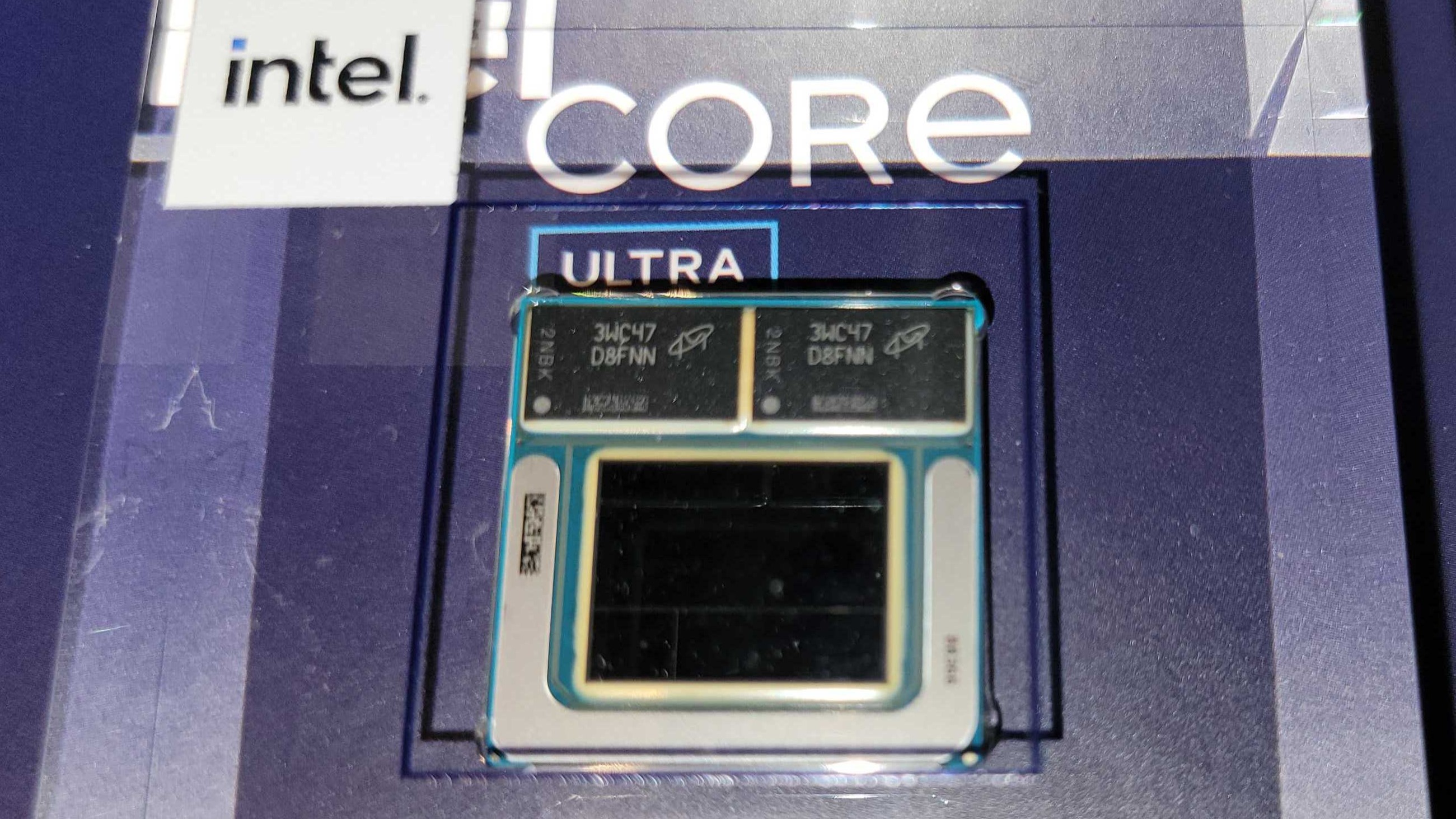
Intel has finally revealed performance benchmarks for its Lunar Lake Core Ultra 200V-series processors ahead of IFA 2024 here in Berlin, touting ‘historic x86 power efficiency’ coupled with the world’s fastest mobile CPU cores and 30% faster gaming performance than competing processors.
Intel says the 50% reduction in package power consumption over its prior-gen models delivers twice the performance per watt, equating to up to 20.1 hours of battery life, beating Qualcomm’s Snapdragon X Elite by almost two full hours, and beating AMD’s competing chips by almost four hours. Intel also took shots at Qualcomm’s compatibility issues, highlighting that 23 games and numerous applications it used for benchmarking refused to run on the X Elite chips.
Naturally, we’ll have to see those claims tested in reviews, but if the chips deliver on Intel’s promises, they’ll be a strong retort to AMD’s Ryzen AI 300 series ‘Strix Point’ chips and Qualcomm’s X Elite. Intel provided plenty of other impressive performance claims against these competing chips, which we’ll cover below, but it avoided making any comparisons to Apple’s M-series lineup.
The new Intel Core Ultra 200V-series chips are now available for pre-orders in OEM systems from a wide range of Intel’s partners, and units start shipping on September 24. Intel also displayed a plethora of OEM laptops at the event and provided plenty of benchmark demos to underline its claims.
We’ll first dive into the product stack and then work through Intel’s impressive performance claims.
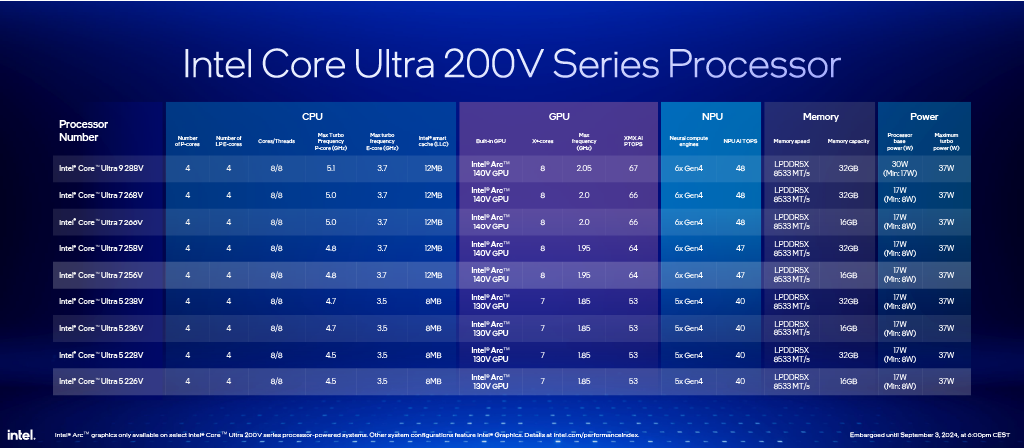
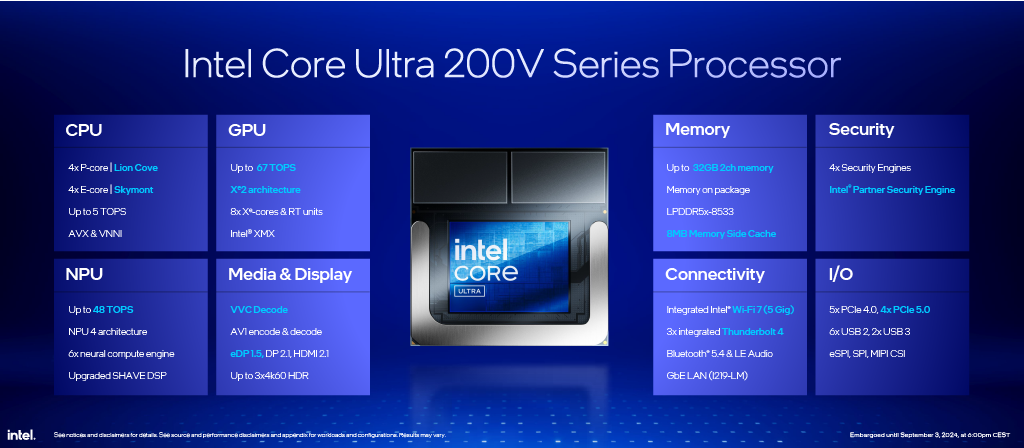
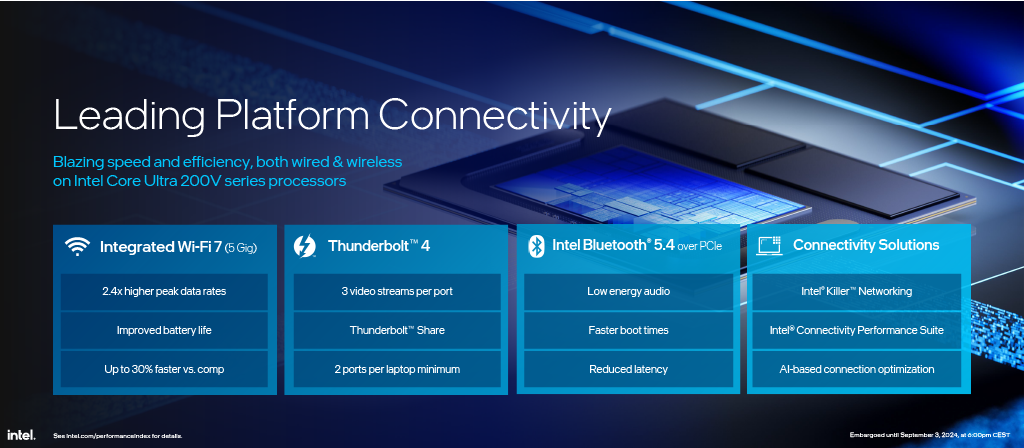
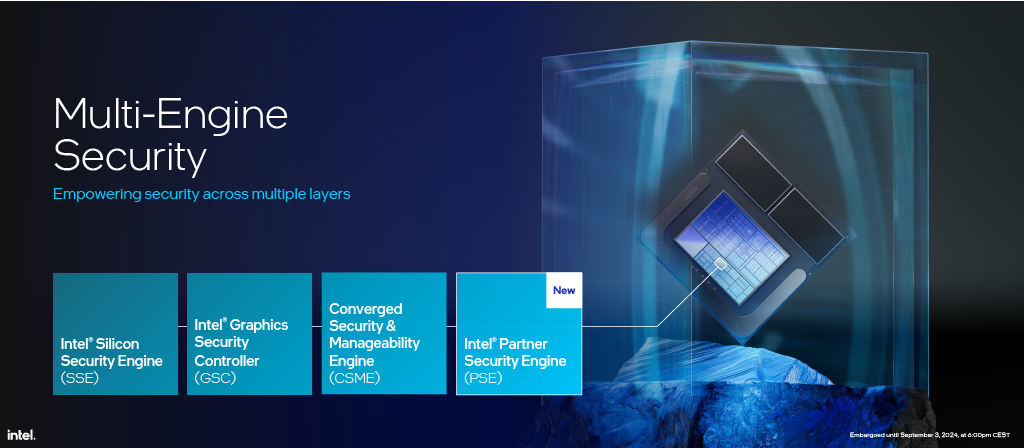
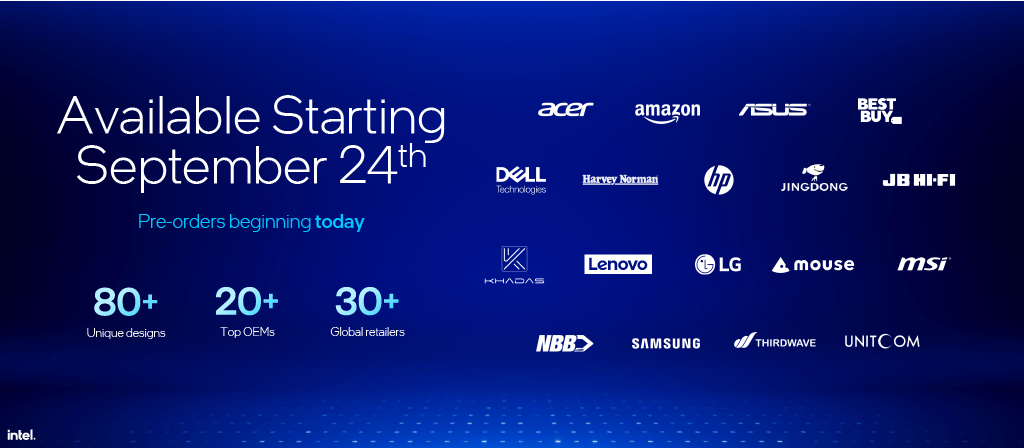
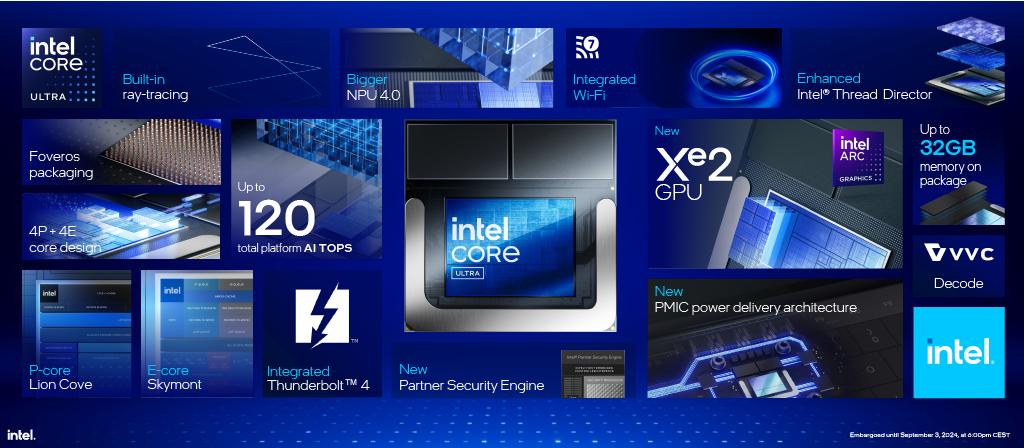
As mentioned, Intel has already shared the deep-dive details of the Lunar Lake architecture, but the company has now shared the actual SKUs that will come to market. The Lunar Lake processors fall into the Core Ultra 200-series, with a new ‘V’ suffix to denote that these chips feature the new architecture. (The V is merely a designator used for differentiation purposes – it doesn’t stand for anything.)
The Core Ultra 200V-series consists of nine different SKUs, all with four single-threaded Lion Cove P-cores and four single-threaded Skymont E-cores with different clock speeds for each model, spanning from a boost of 4.5 GHz to 5.1 GHz, along with on-package memory capacities of either 16GB or 32GB running at LPDDR5X-8533. Lunar’s L3 cache capacities come in either 8MB or 12MB, depending on the model, but all chips have the new 8MB Side Cache (akin to the system-level cache found on Arm processors). The CPU delivers up to 5 TOPS of AI performance, which appears consistent for all models.
The chips feature TDPs ranging from 8W to 17W for the bulk of the stack, with the flagship Core Ultra 9 288V being a lone 30W TDP model. However, peak turbo power draw tops out at 37W for all models.
Intel’s Arc 100V-series integrated GPU engines come with the Xe2 architecture and either seven or eight Xe2 cores/ray tracing units operating at peak frequencies ranging from 1.85 GHz to 2.05 GHz. This variation in clock speeds also impacts the amount of AI TOPS available from the XMX engine per model, which Intel has listed as ranging from 53 to 67 TOPS.
Intel has also bifurcated the amount of AI performance from the neural processing unit (NPU) based on the model, with some chips only meeting the bare minimum for Microsoft’s CoPilot+, which is 40 TOPS of performance. Higher-end SKUs range up to 48 TOPS, giving Intel a total of 120 TOPS from the entire platform.
Intel has previously shared information on Lunar Lake’s various connectivity options, but it now divulged that the chip supports five lanes of PCIe 4.0 and four lanes of PCIe connectivity, with the latter most likely to be used for any system that comes with a discrete GPU. The chips also support up to six USB 2 and two USB 3 ports. Other amenities include integrated Wi-Fi 7 Thunderbolt 4 (no, not TB5), Bluetooth 5.4, and LE audio.
Lunar Lake also has four integrated security engines, with the new entrant being the “Intel Partner Security Engine,” which is just a fancy way to say that this is Microsoft’s Pluton security engine integrated directly into Intel’s silicon, a first.
As mentioned, Lunar Lake preorders start today, and systems from the likes of Asus, Dell, Acer, MSI, and Lenovo, among others, begin shipping on September 24. Intel says 80+ Lunar Lake laptops will come from 20+ OEMs and be available at 30+ global retailers.
Now, on to the performance and battery life claims.
Lunar Lake Battery Life Benchmarks
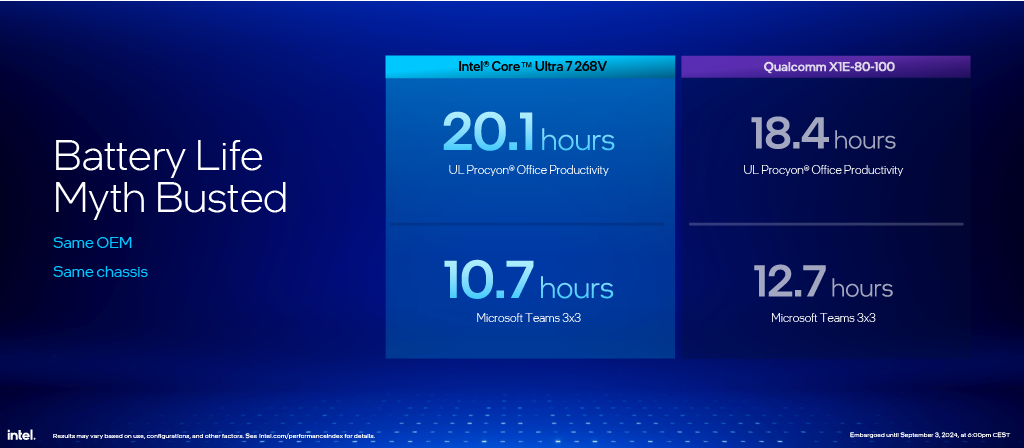
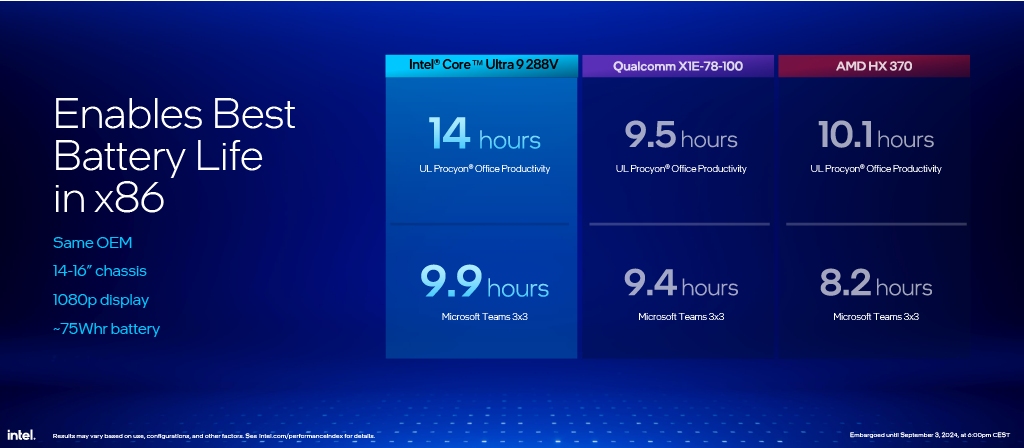
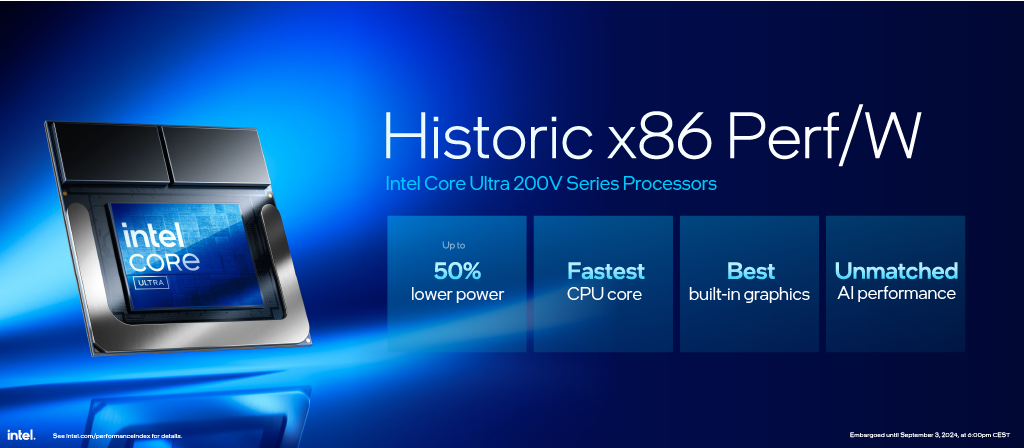
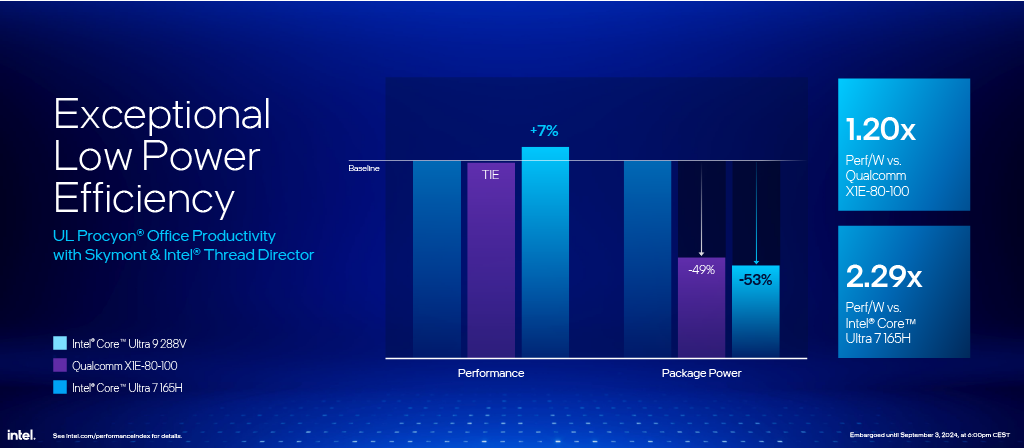
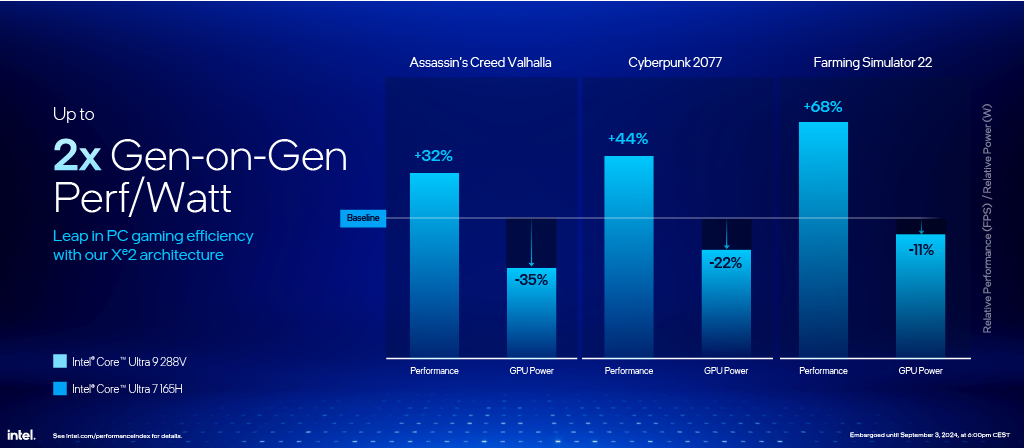
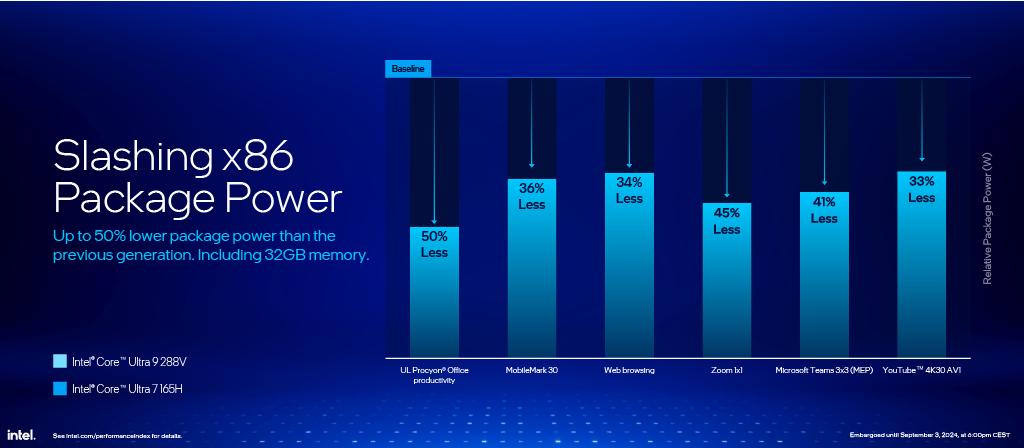
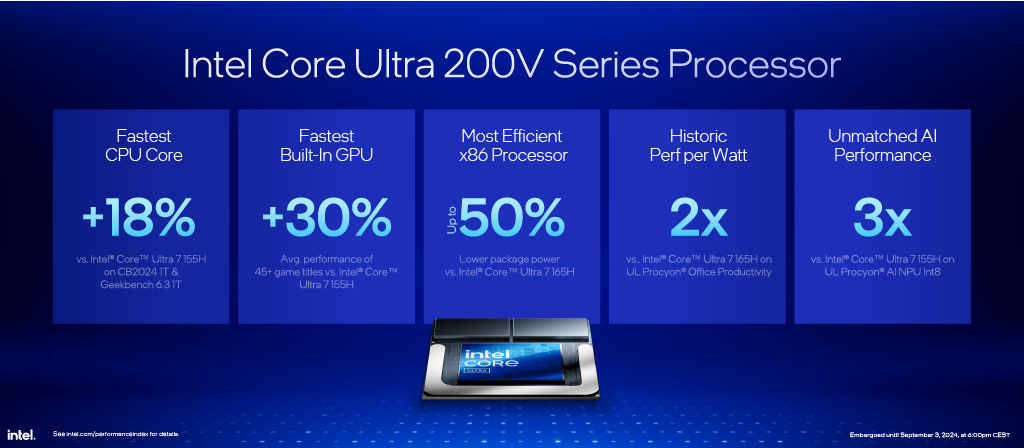
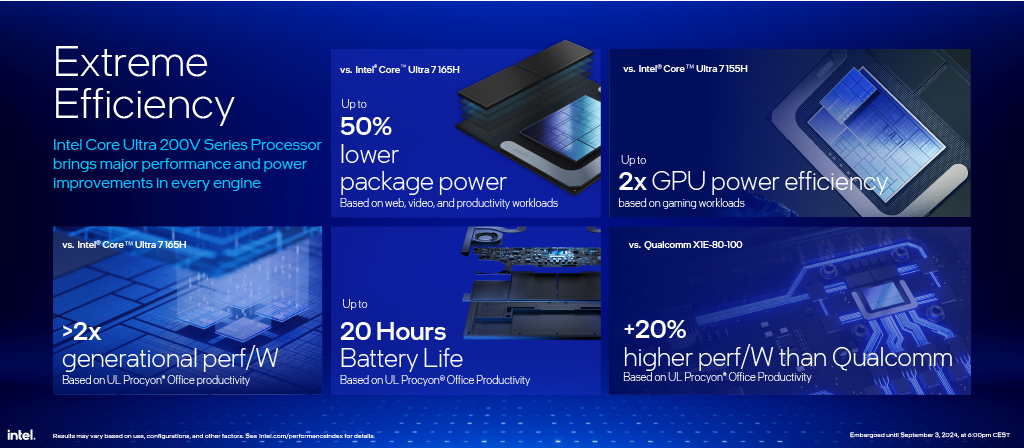
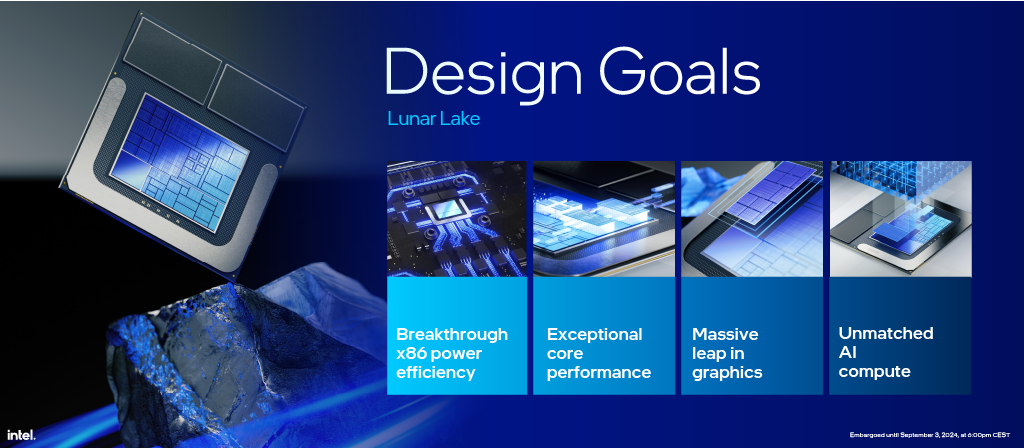
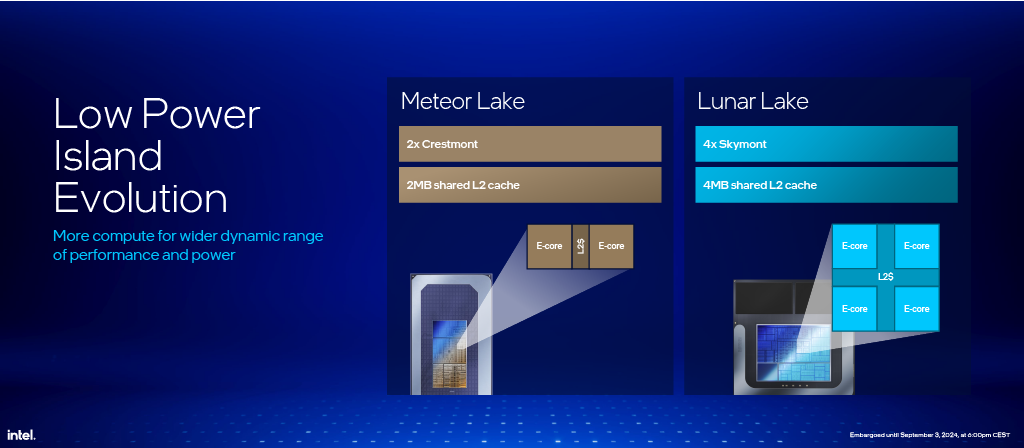
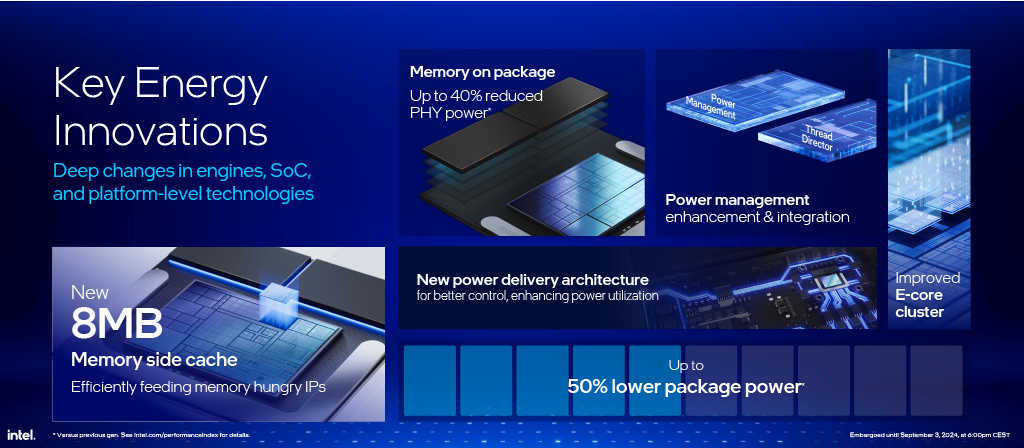
As with all vendor-provided benchmarks, take Intel’s claims with a grain of salt. However, Intel claims to have used all production systems for its benchmarks, often placing itself at a disadvantage in spec-to-spec comparison of the laptops. The company also used physical measurements for the power draw figures. We’ve included the full series of test notes at the end of the article.
Intel claims ‘historic’ x86 power efficiency, saying it delivers 1.2X more performance-per-watt than the Qualcomm X Elite X1E-80-100. Intel also says Lunar Lake delivers 2.29X more performance-per-watt than the prior-gen Meteor Lake Ultra 7 165H.
On the gaming front, Intel claims Lunar has up to a 2.2X gen-on-gen improvement in power efficiency and up to 50% lower package power than the previous-gen Meteor Lake, even though it included power measurements with Lunar’s 32GB on-package memory while not measuring memory power consumption with the Meteor Lake chip.
These advances culminate in an Intel claim of 20.1 hours of battery life with the Core Ultra 7 268V in the UL Procyon Office Productivity benchmark and 10.7 hours of battery life in a Microsoft Teams call. This beats Qualcomm’s 18.4 and 12.7 hours of battery life with the X1E-80-100 chip. These numbers were generated with the same chassis from the same OEM, so battery and screen sizes were identical – the only differences were the motherboard and chips.
Intel switched to the highest-end Core Ultra 9 288V for the next series of battery life tests, in which it beat Qualcomm’s X1E-78-100 by 4.5 hours and half an hour in the same two tests. Lunar Lake also beat AMD’s HX 370 by 3.9 hours in the productivity test and 17 hours in the Microsoft Teams call.
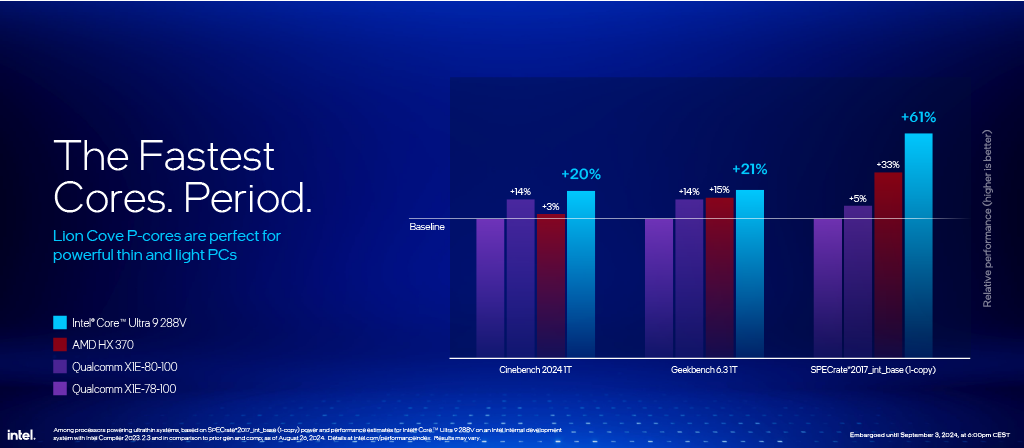
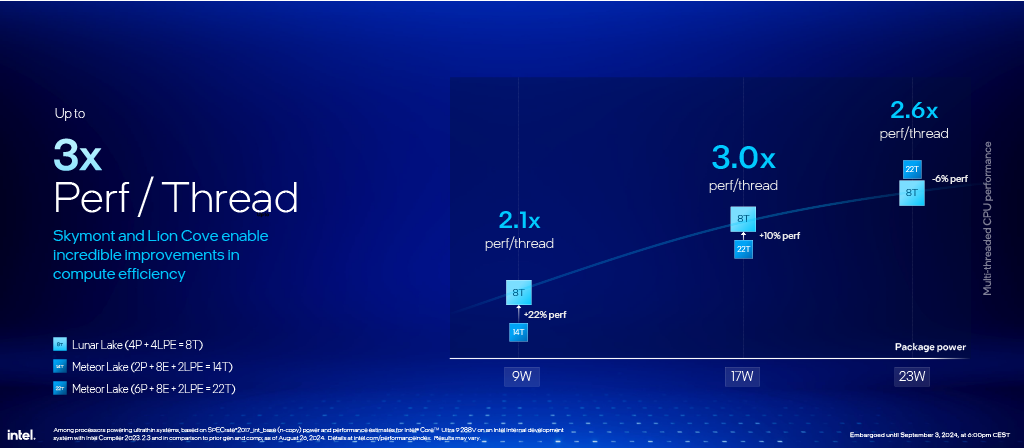
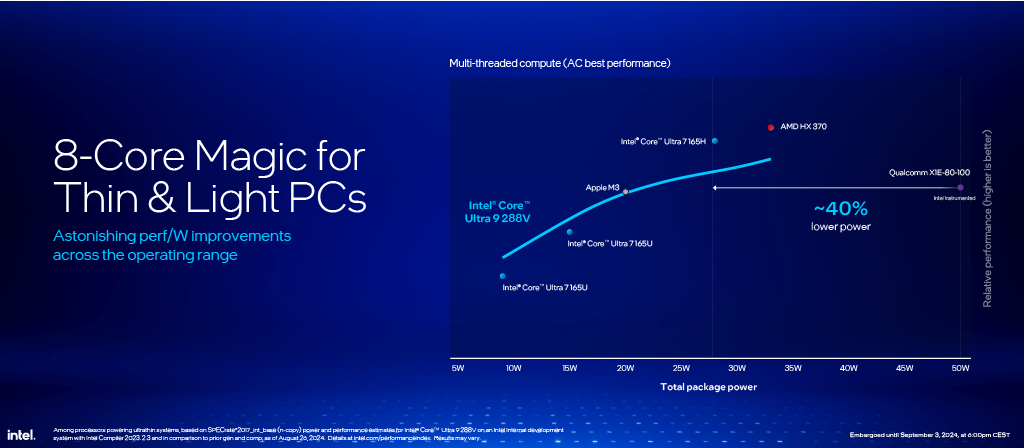
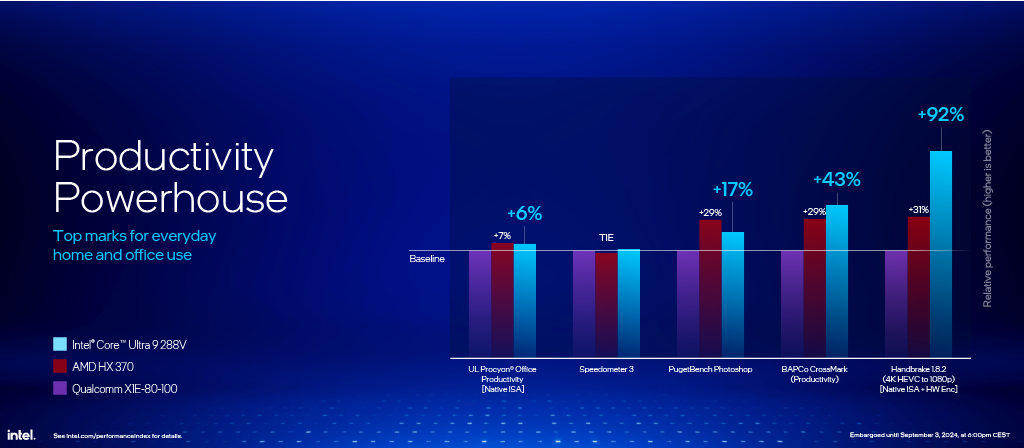
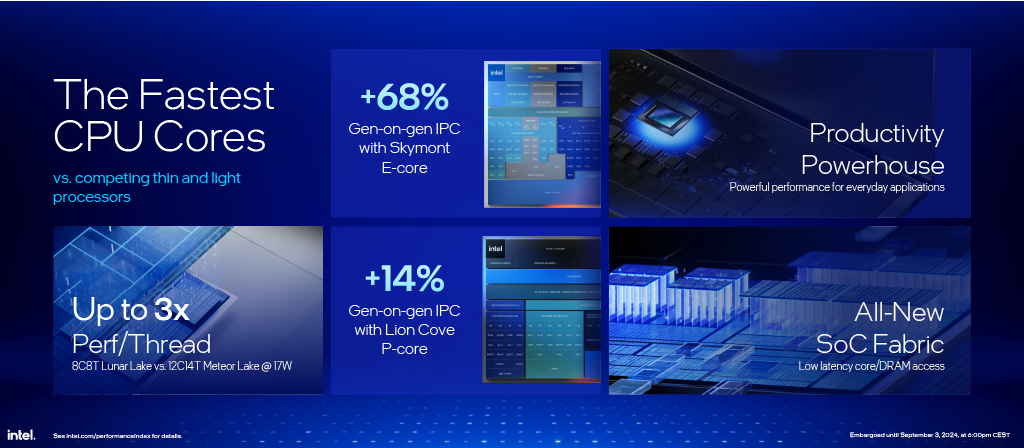
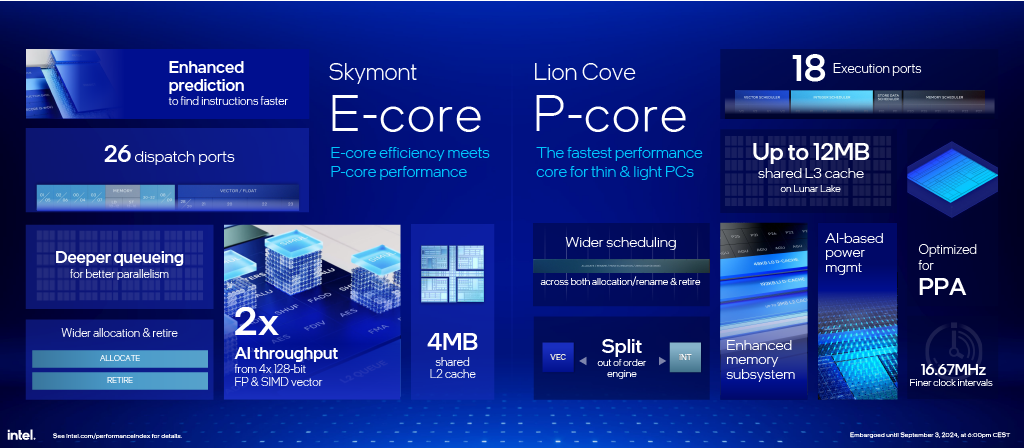
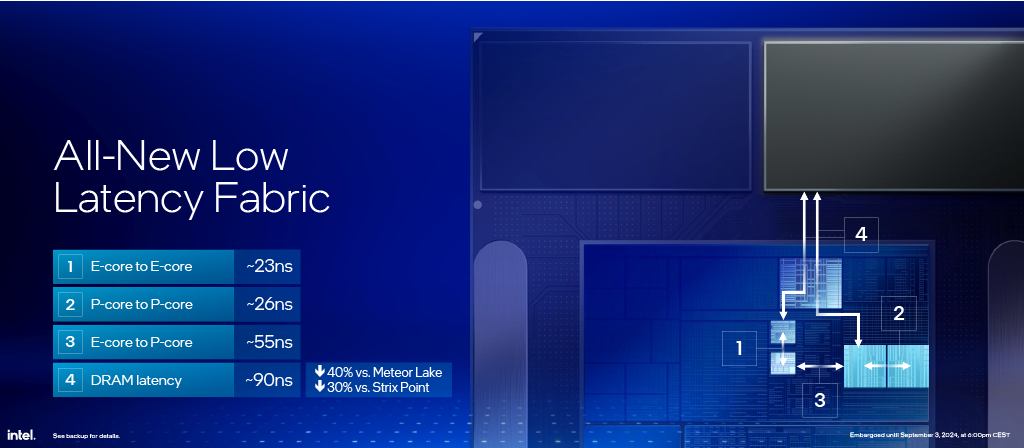
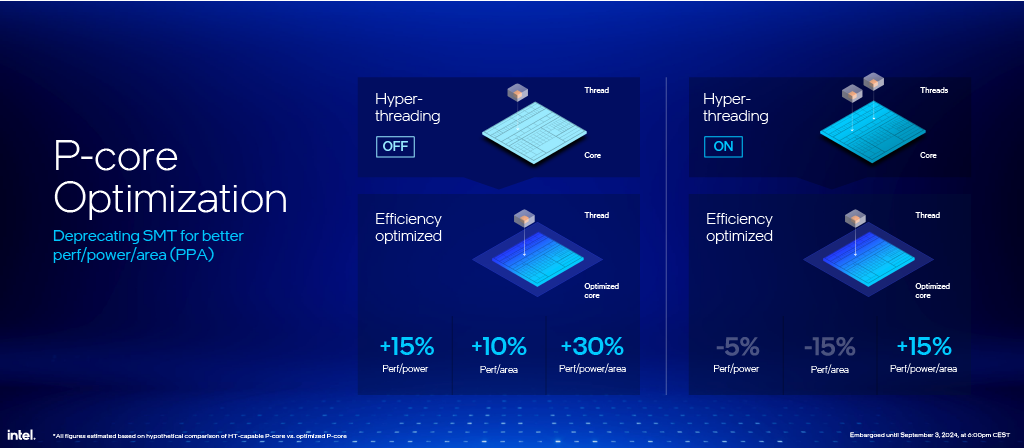
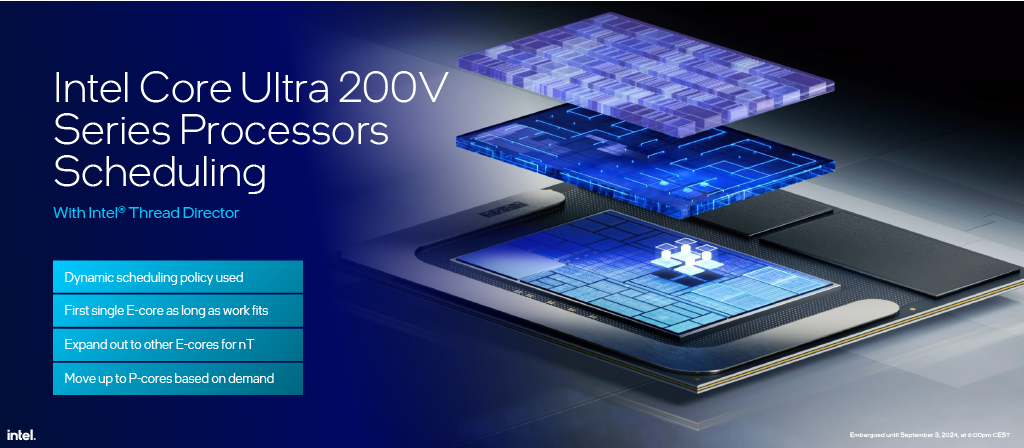
Intel says it has made a range of improvements to the design, most of which it has already shared. However, it also divulged new news that it shared during Hot Chips – the company has reduced its fabric latency by leaps and bounds. Intel reduced memory latency by 40% compared to its prior generation, and Intel claims that gives Lunar a 30% latency advantage over AMD’s Strix Point. Intel’s fabric latency is as low as 23ns for E-core to E-core traffic and spans up to 55ns for E-core to P-core traffic. For comparison, Intel claims that Qualcomm’s latency weighs in at 150 to 180ns.
Intel discarded hyperthreading with Lunar Lake to both improve performance and power efficiency. Intel claims Lunar Lake offers 15% more performance with its P-Cores at the same power level as Meteor Lake, 10% more performance per square millimeter of die area, and a 30% generational gain in overall power/performance metrics.
Intel claims the sum of the architectural changes gives Lunar Lake the fastest CPU cores in the market, with anywhere from a 20% to a 64% advantage in single-threaded performance over the Qualcomm Snapdragon X Elite chips. They also beat the AMD Strix Point HX370 by 3% to 33% in single-threaded tasks.
Intel also touted phenomenal improvements in compute efficiency, saying Lunar Lake provides between 2.1 to 3.0X more performance per thread than its Meteor Lake processors at different ISO power thresholds. This results in cumulative performance improvements that range from 6% more to 22% more performance, but with only eight cores and threads. In contrast, the Meteor Lake chips have 22 threads of compute horsepower. If true, impressive indeed.
Intel also provided a performance-per-watt curve comparing its performance at various power levels against competing chips, all tested plugged into the wall. Here we can see the company’s sole comparison to Apple’s M3 chips. Overall, Intel claims it offers more performance than prior-gen Meteor Lake and comparable performance to the Apple M3 at their rated power levels, but Lunar Lake extends further up to 25W in this comparison. Intel used this chart to highlight that it offers the same performance as the Qualcomm X1E-80-100 but uses 40% less power – the Qualcomm chip tops out at 50W.
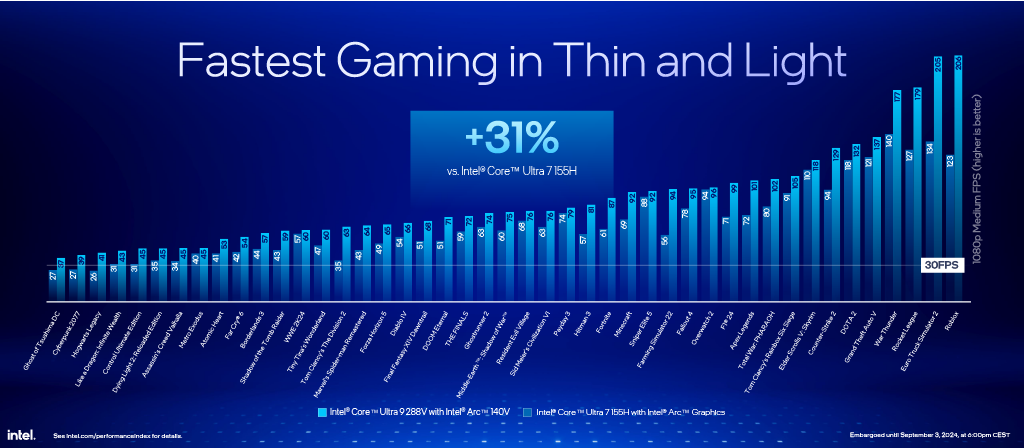
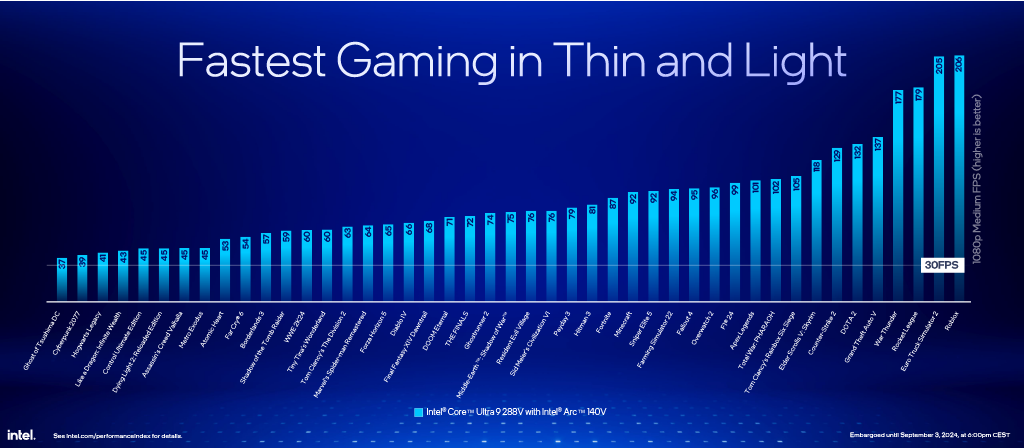
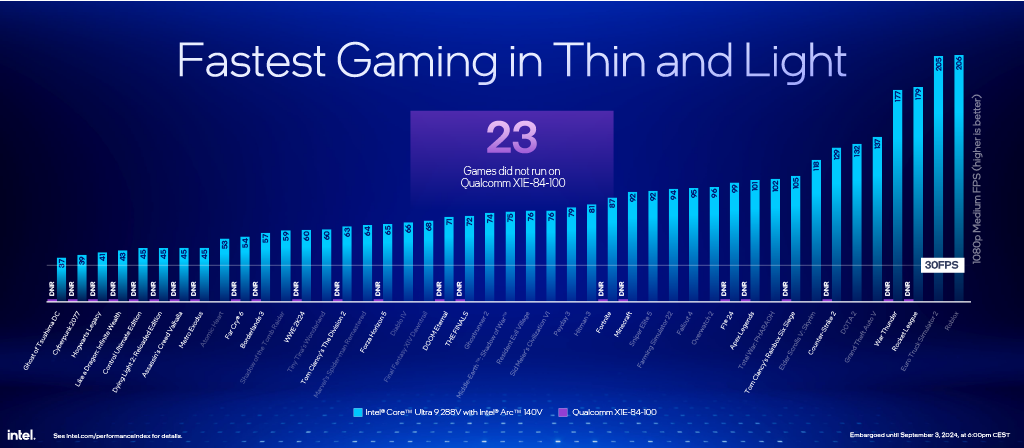
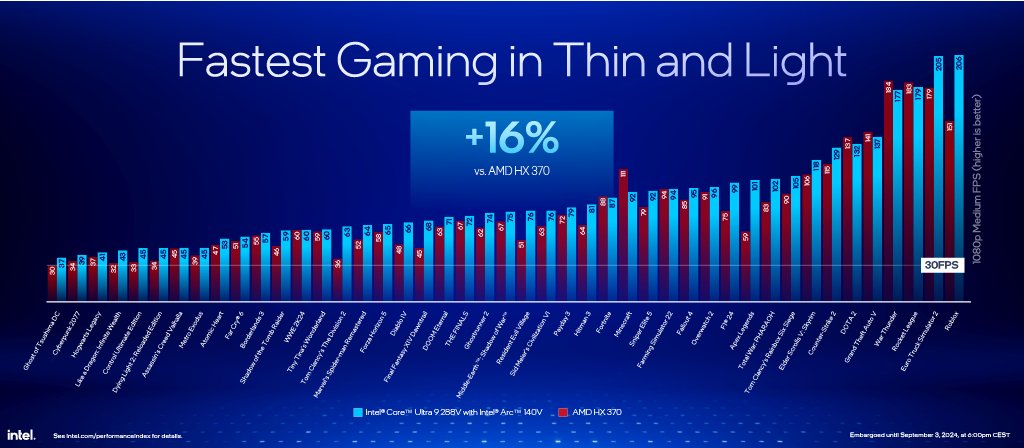
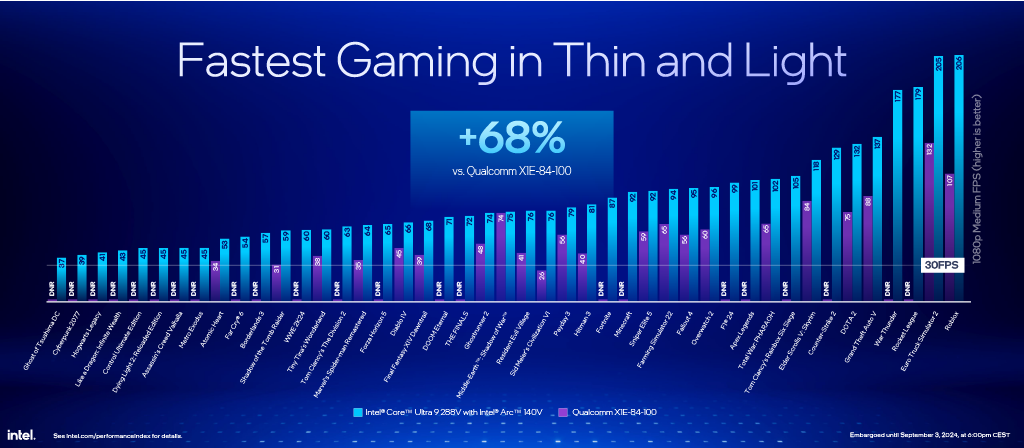
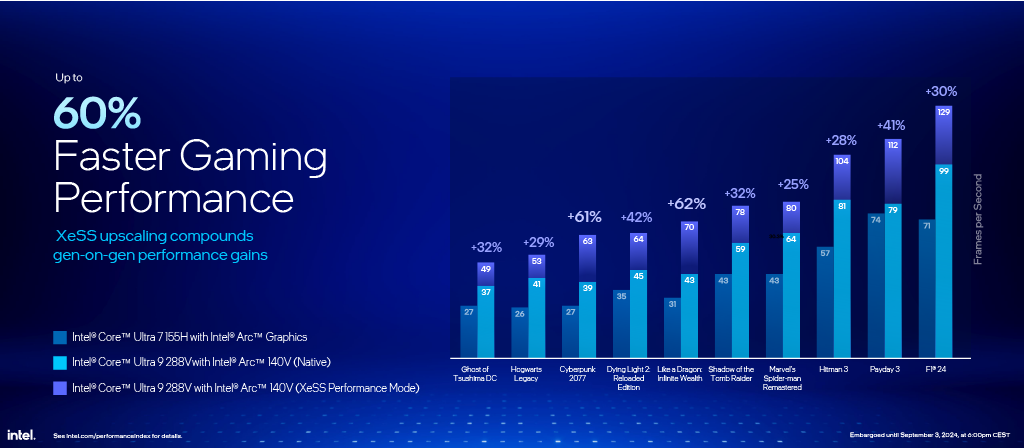
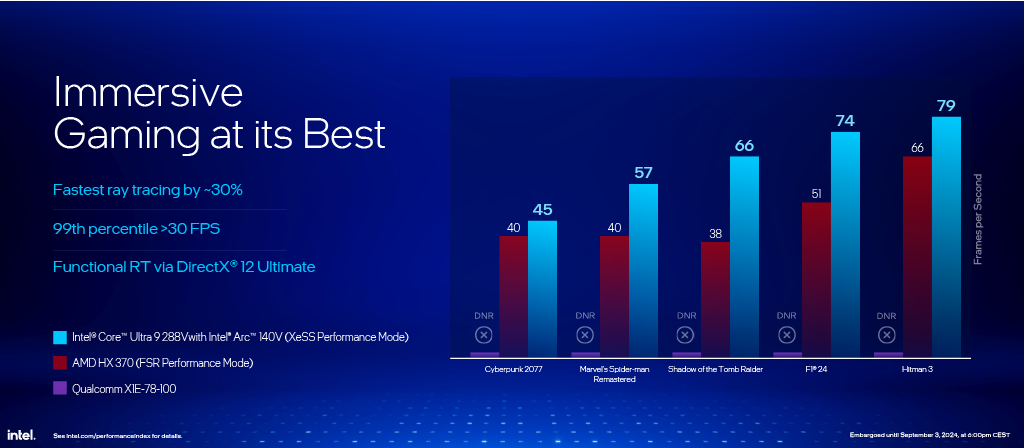
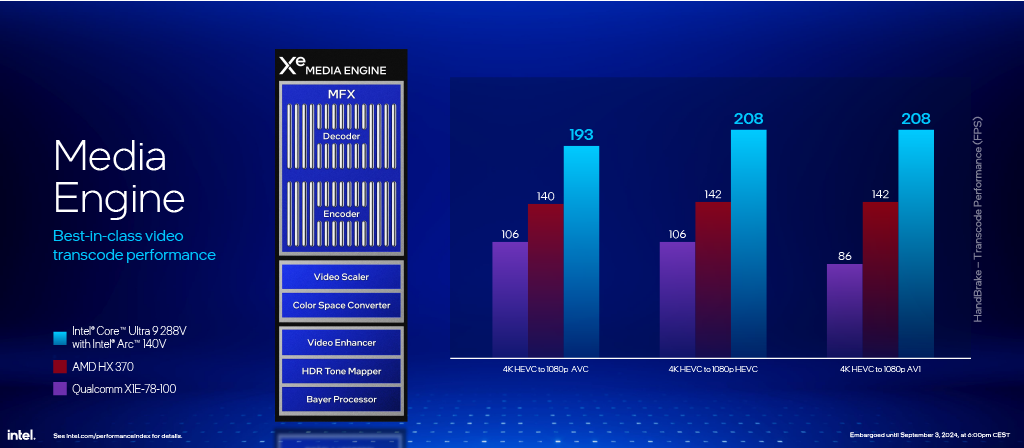
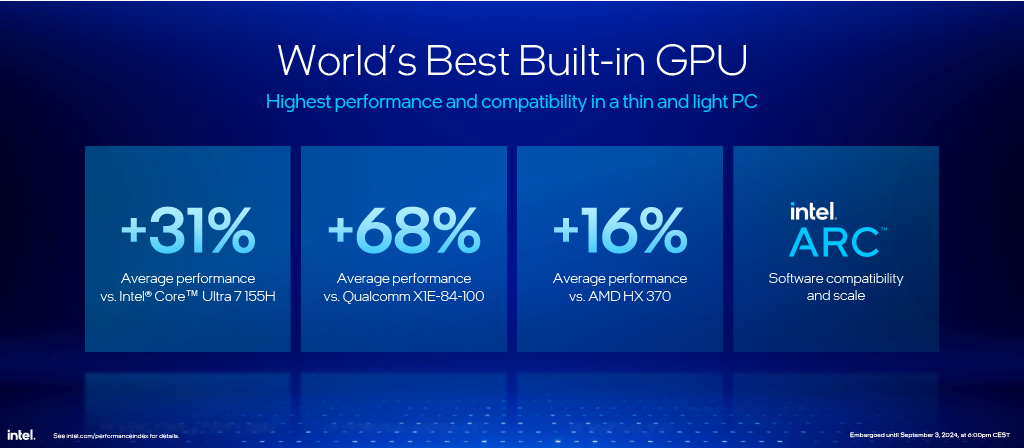
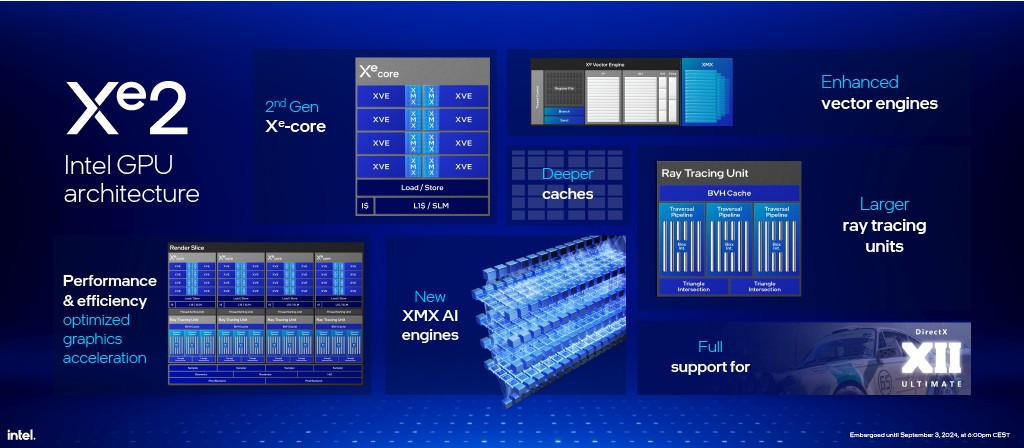
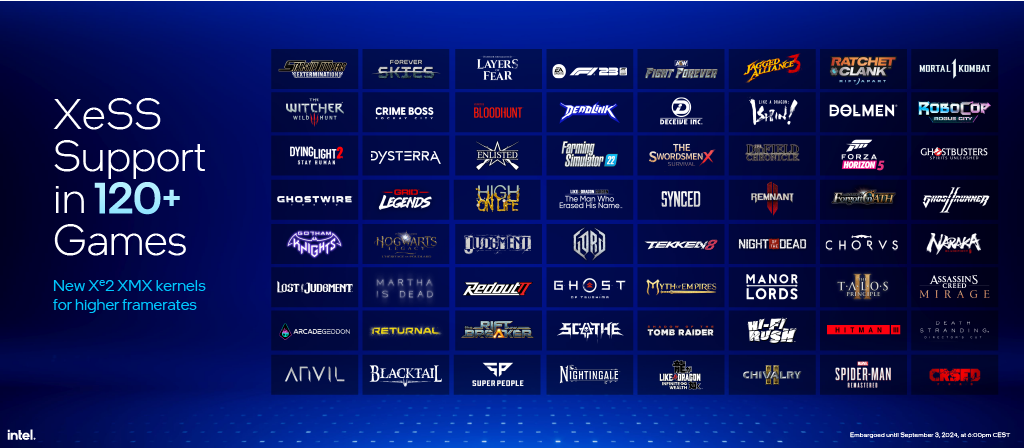
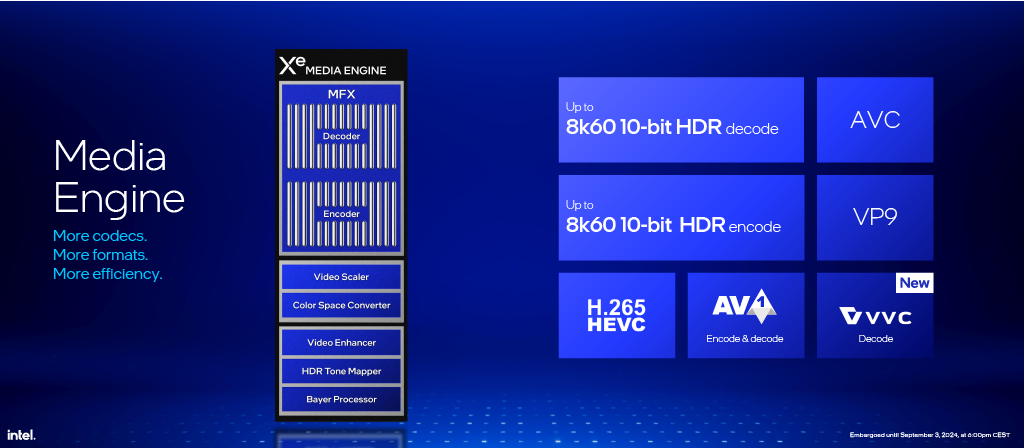
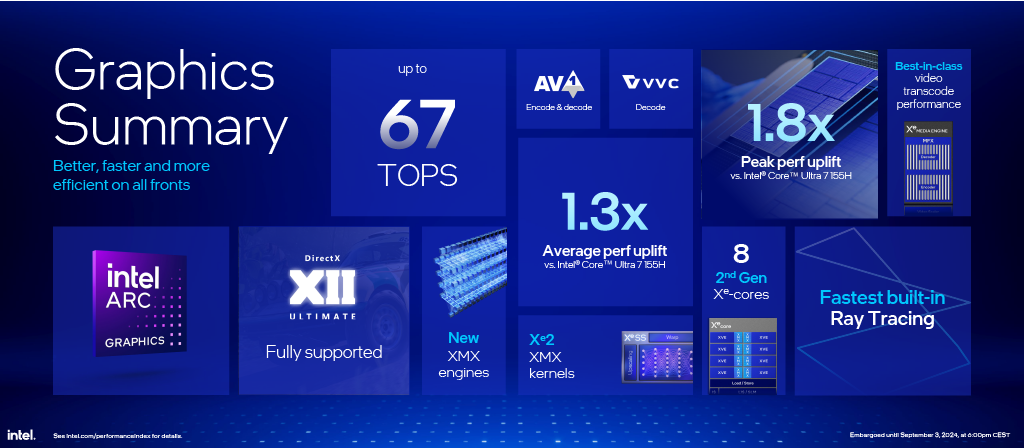
Intel didn’t miss a single opportunity to dunk on Qualcomm for the compatibility issues borne of its Arm architecture. Intel proudly showed a chart with gaming tests highlighting that 23 games would not run on the Snapdragon X1E-84-100. Intel used a total of 48 games for its testing, all tested at 1080p medium settings. Intel recorded a 68% advantage in gaming performance using only the games that would run over the Qualcomm chip.
Intel also claimed a 31% gain in gaming over its prior-gen Meteor Lake with Arc graphics. Intel also claimed a 31% gain in gaming over its prior-gen Meteor Lake with Arc integrated graphics and a 16% advantage over AMD’s HX 370 – a bold claim, indeed, given AMD’s historically great performance with integrated graphics.
Intel also touted the integration of XeSS support in over 120 games and that the Lunar Lake chips have the same software feature set as its desktop GPUs. Intel also provided benchmarks that show the effect of XeSS, which offers additional performance gains.
The company also claims impressive performance with ray tracing, saying it delivers 30% higher ray tracing performance than the AMD HX 370 and the Qualcomm X1E-78-100.
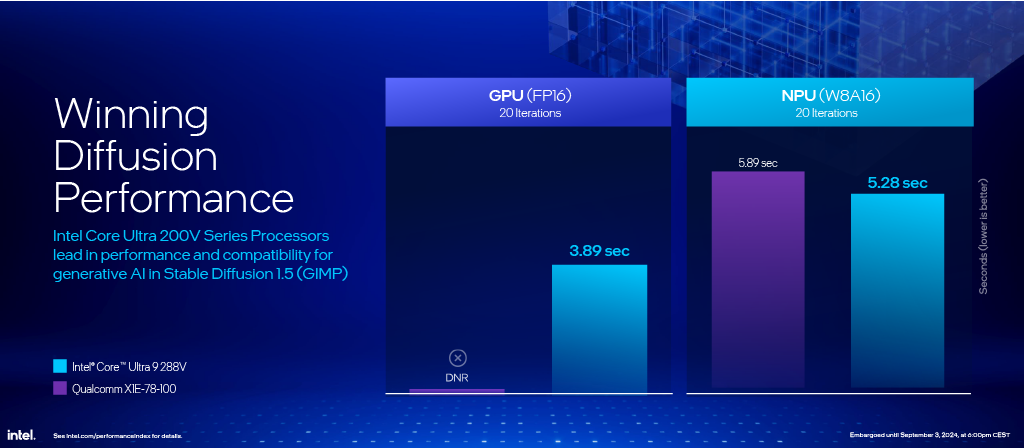
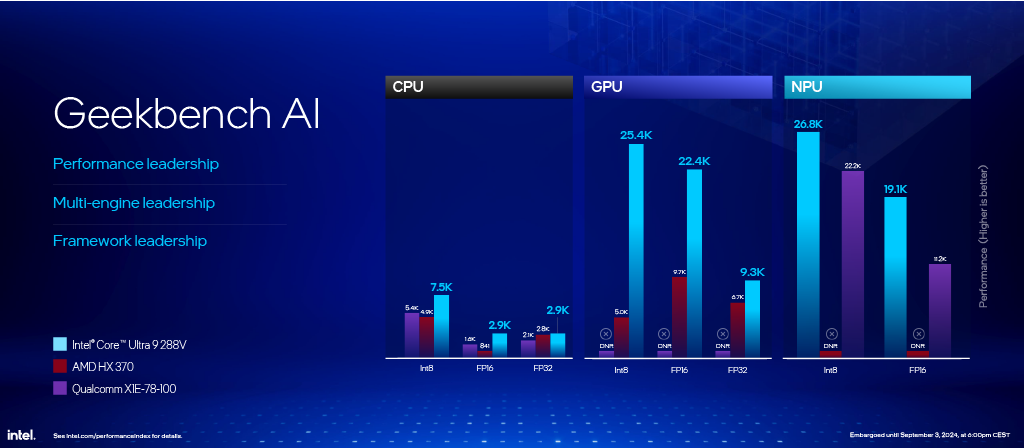
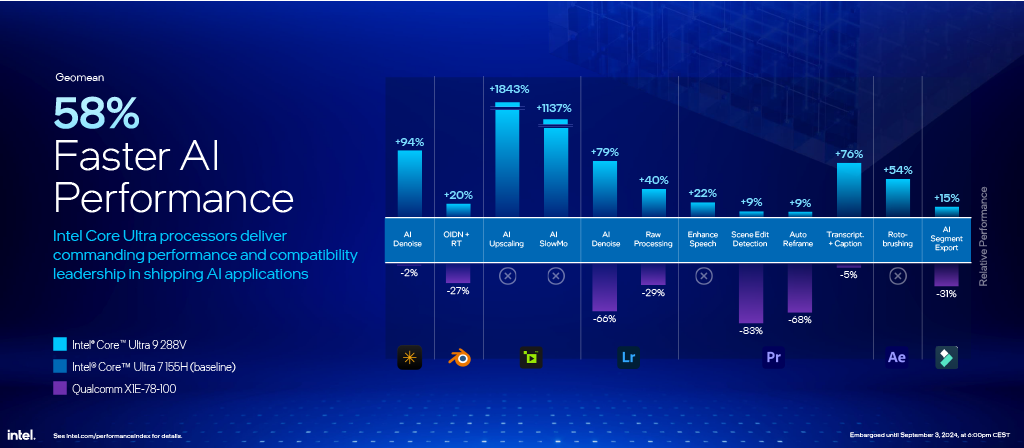
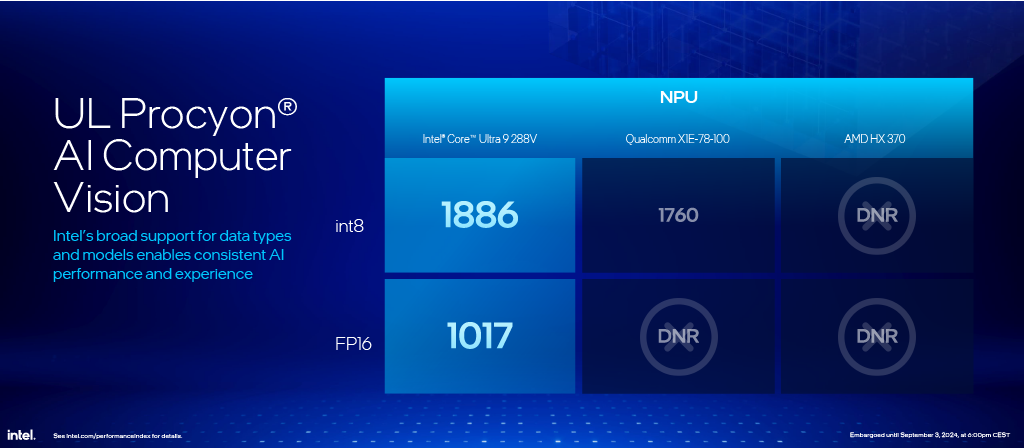
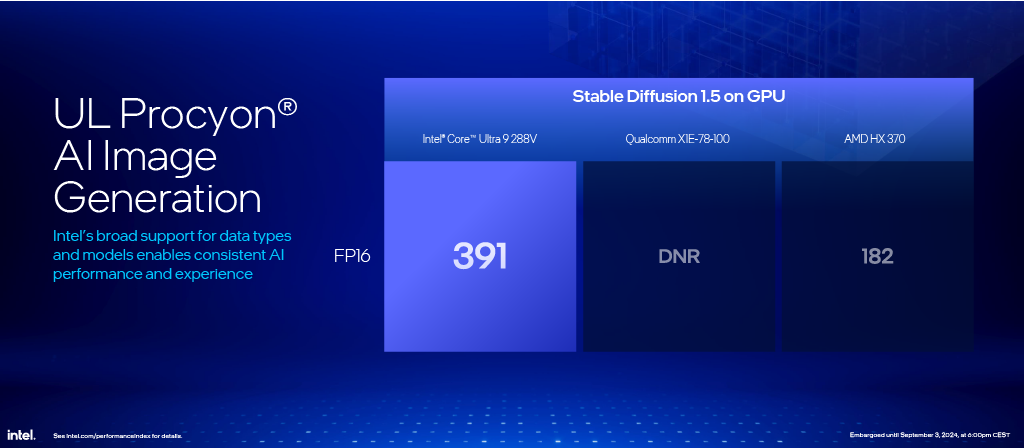
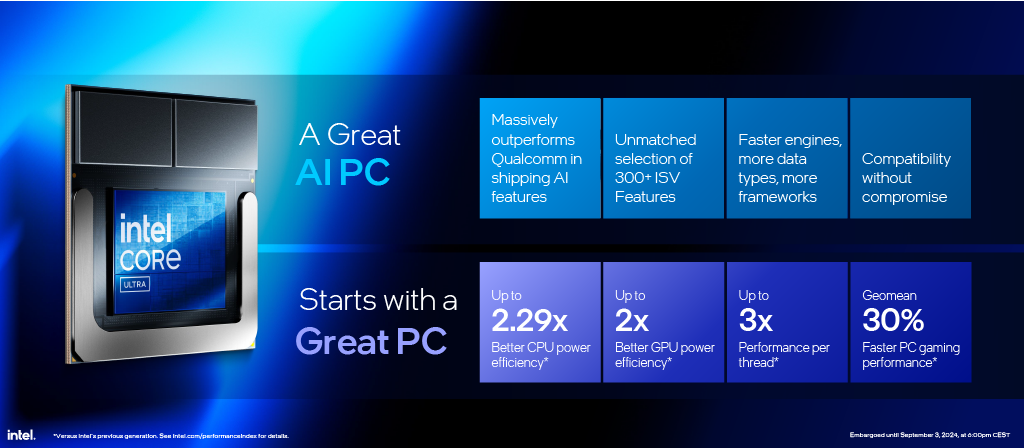
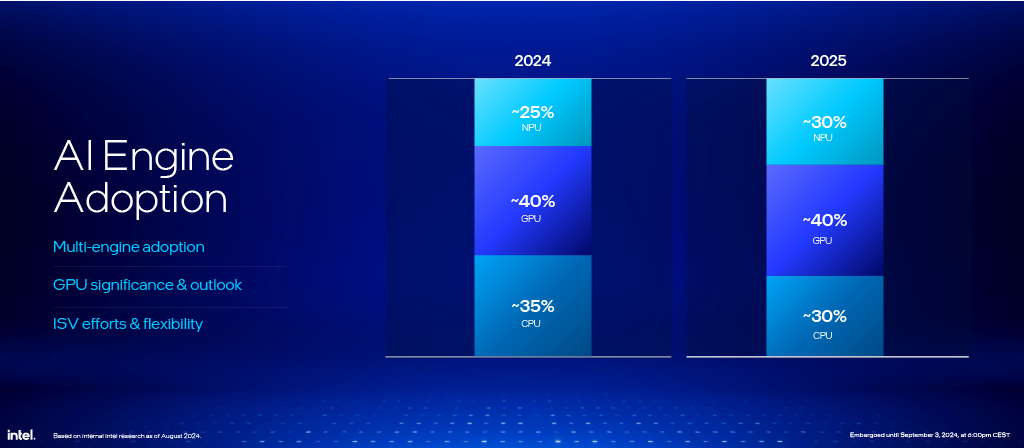
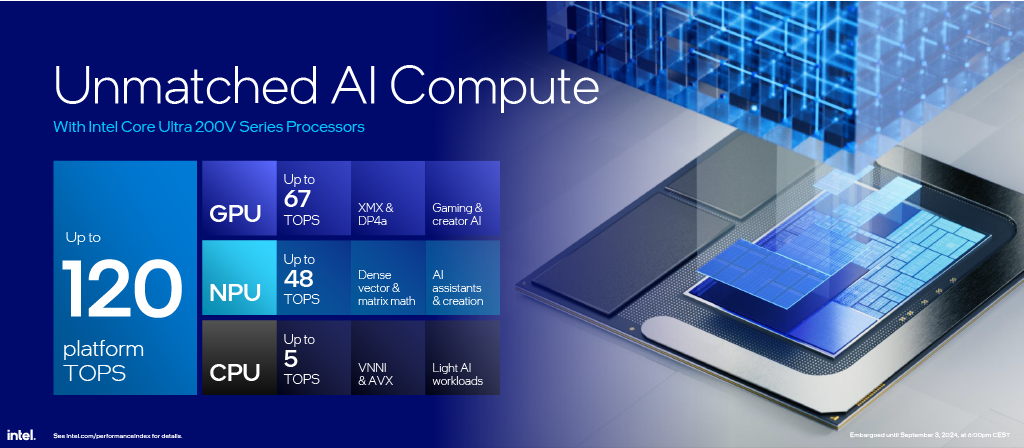
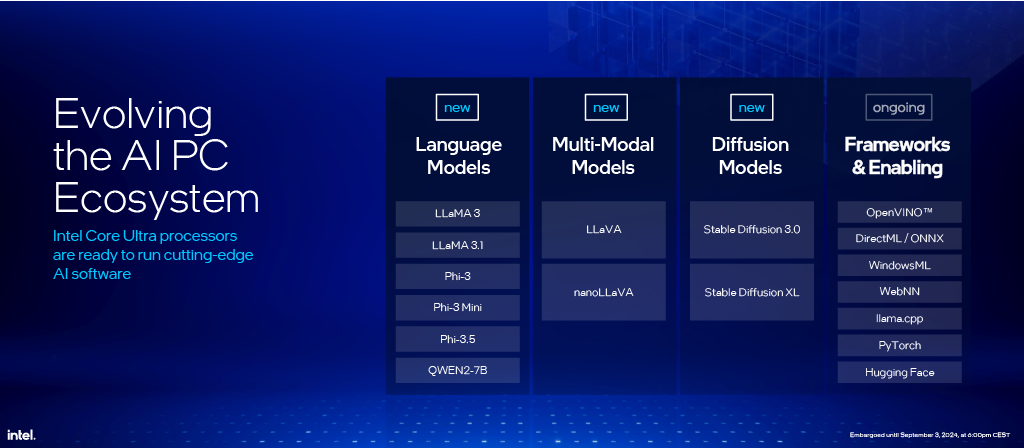
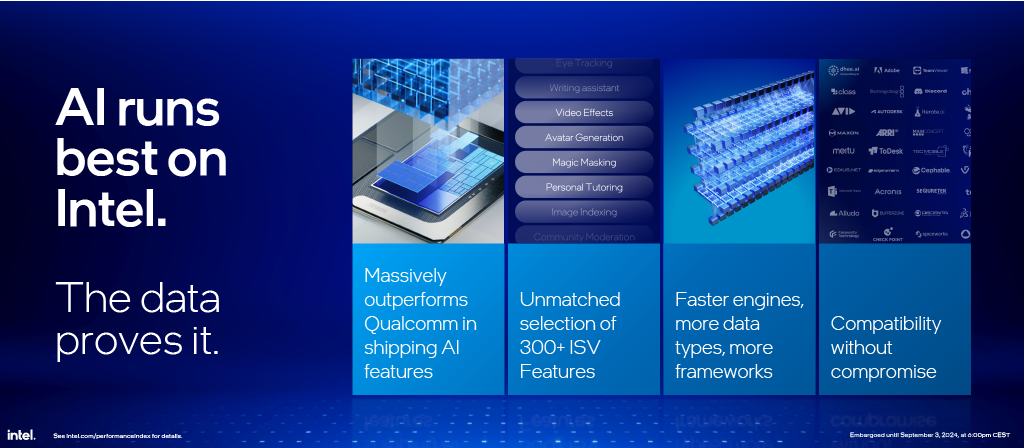
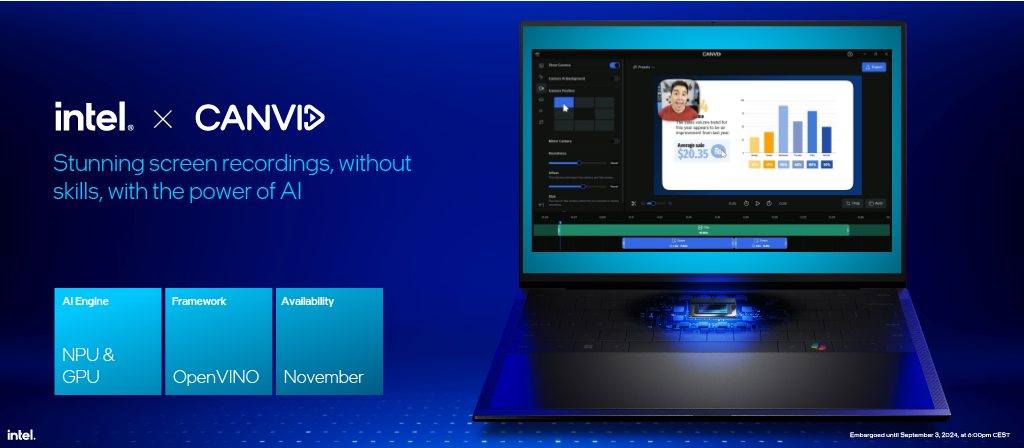
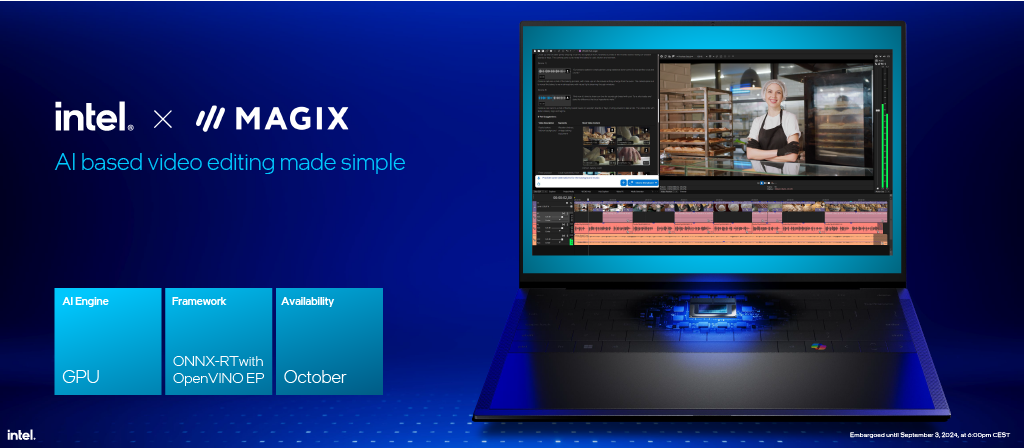
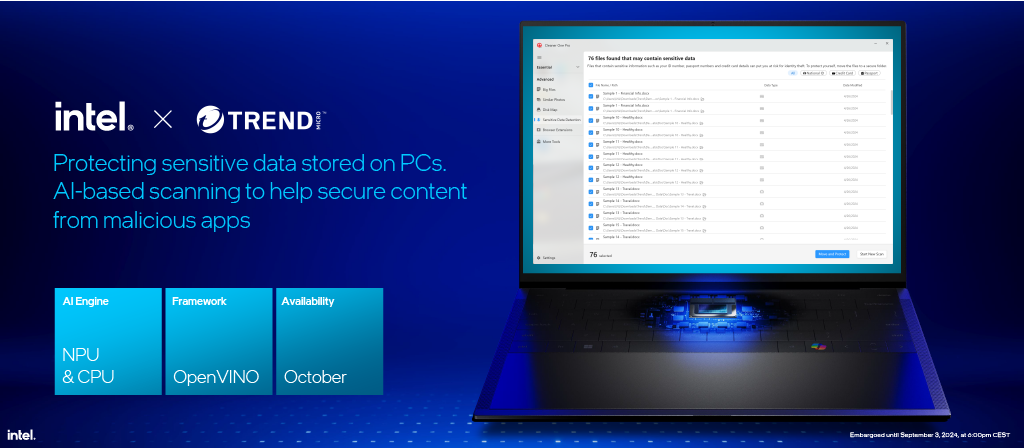
AI is the rage, and the dawn of the ‘AI PC’ has spurred a new arms race. Intel’s Lunar Lake has the highest full-platform TOPS rating in the industry, topping out at 120 combined TOPS from the CPU, GPU, and NPU. Intel says the broad software developer ecosystem is interested in full-platform TOPS, particularly as they will continue to leverage the GPU for heavy tasks rather than just the sheer throughput of the NPU engine.
Intel again highlighted that some AI programs, like Stable Diffusion 1.5, won’t run on Qualcomm’s GPU and highlighted a small performance advantage with Lunar Lake’s NPU. Intel also touted that its NPU retains support for higher-precision FP16 instructions, whereas AMD and Qualcomm top out at INT8.
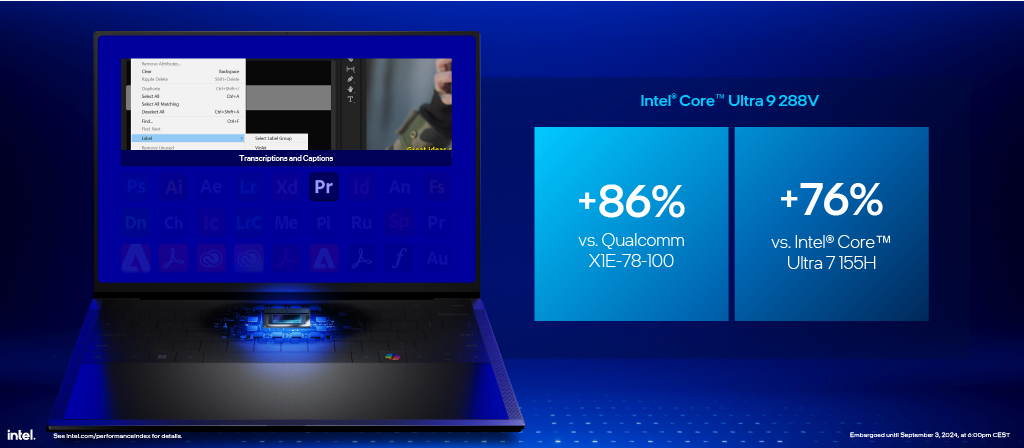
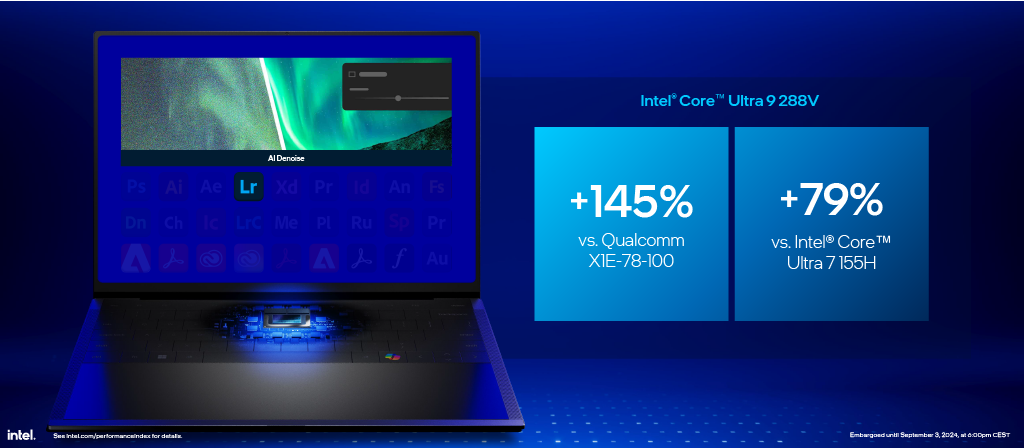
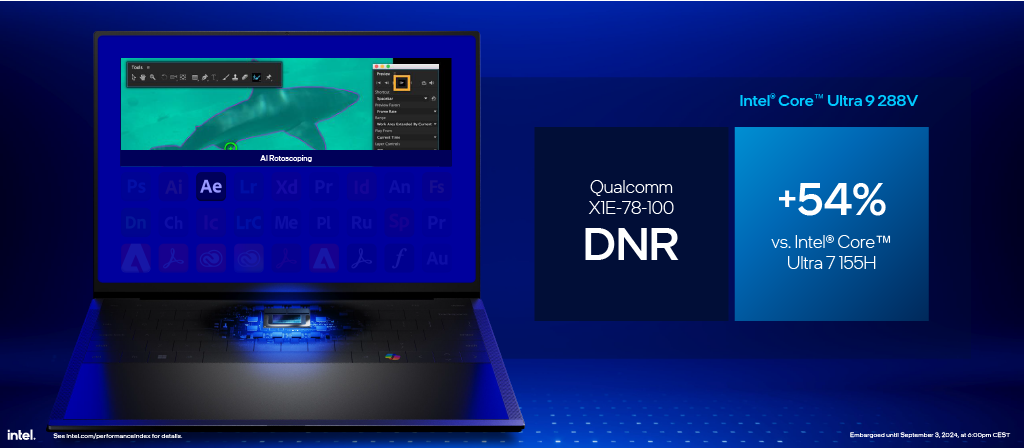
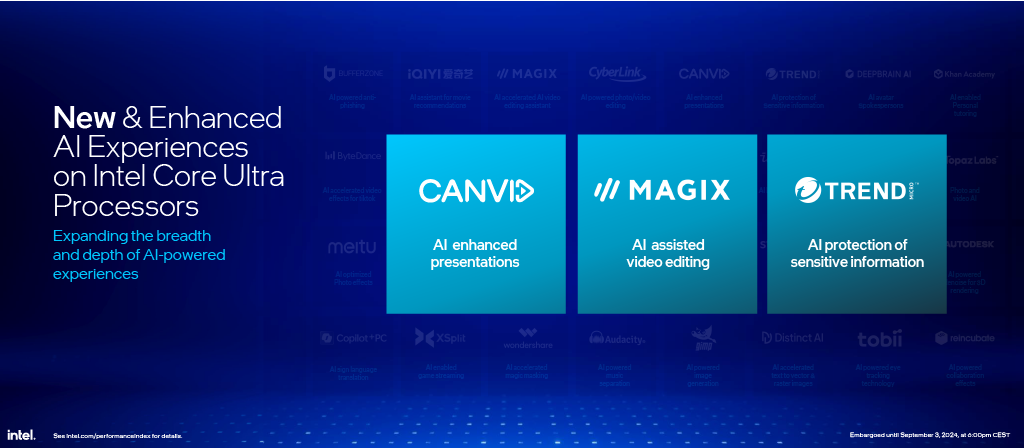
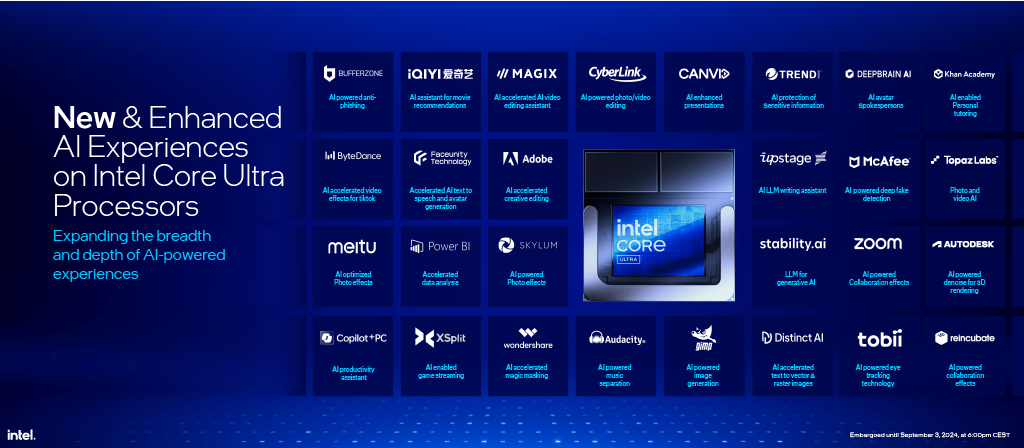

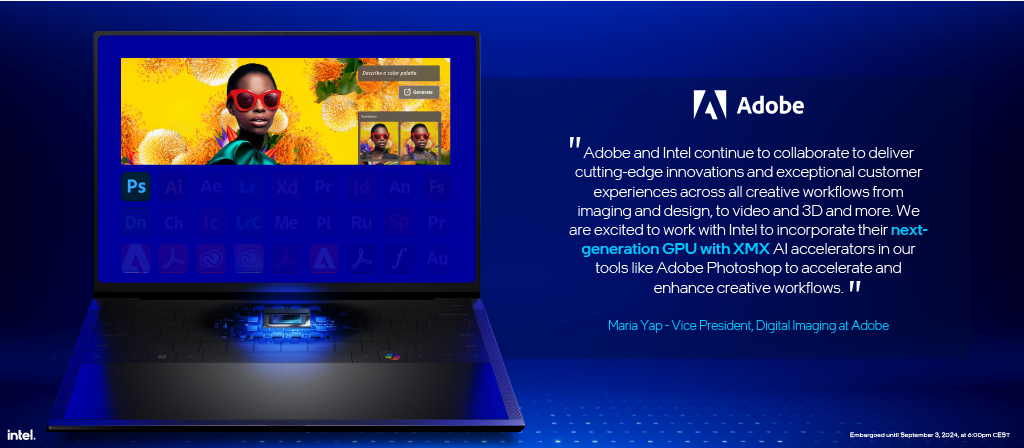
Intel also claims strong leads across all of its AI compute engines relative to competing processors and the broadest software support for AI workloads.
Below you can find the test notes from Intel's benchmarks.
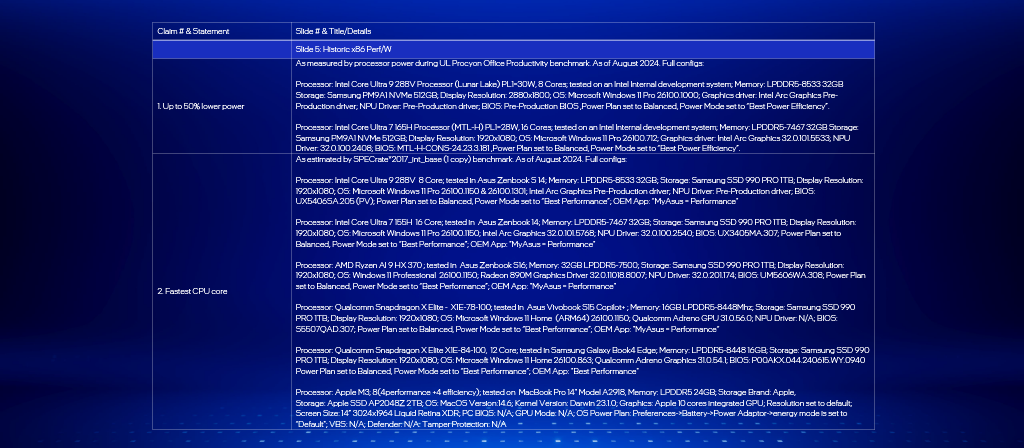
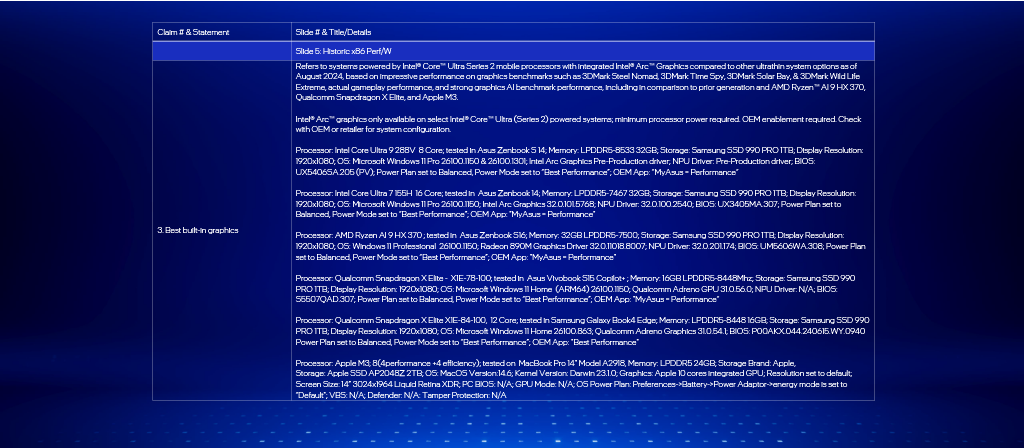
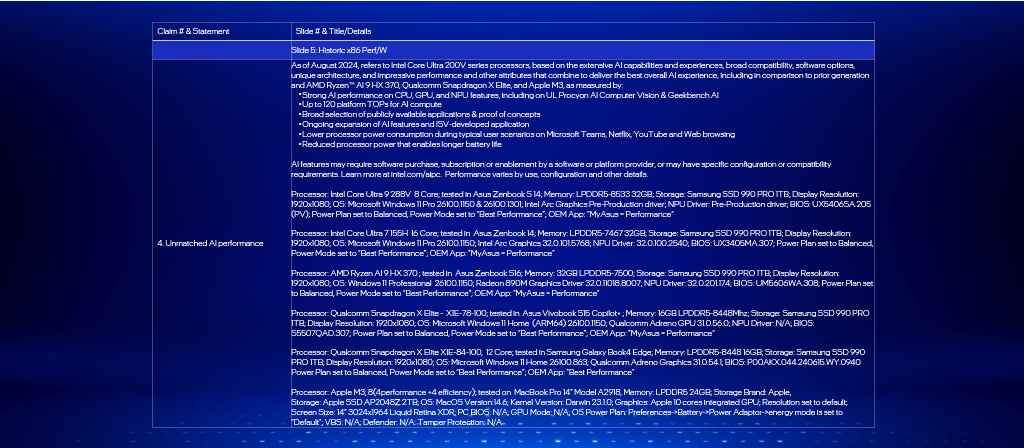
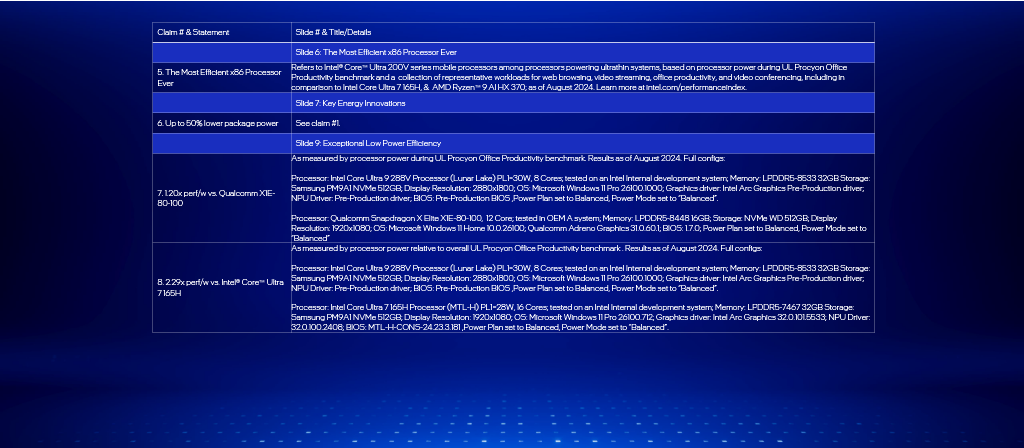
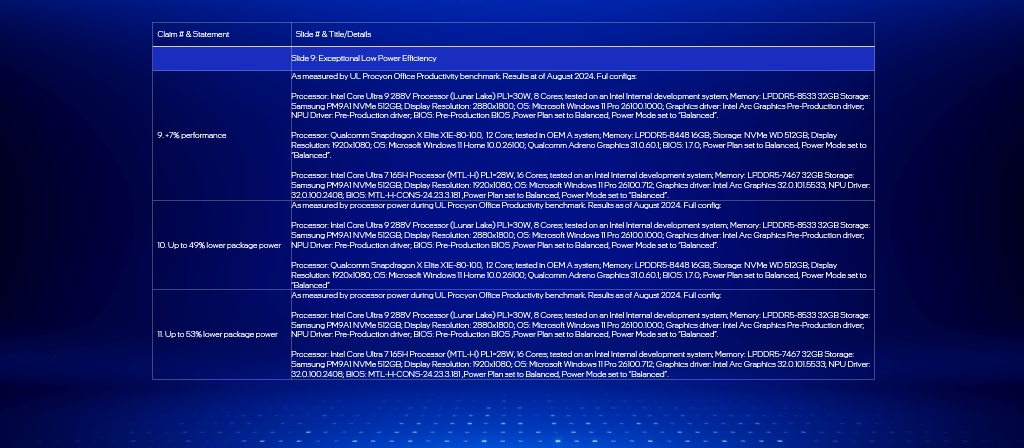
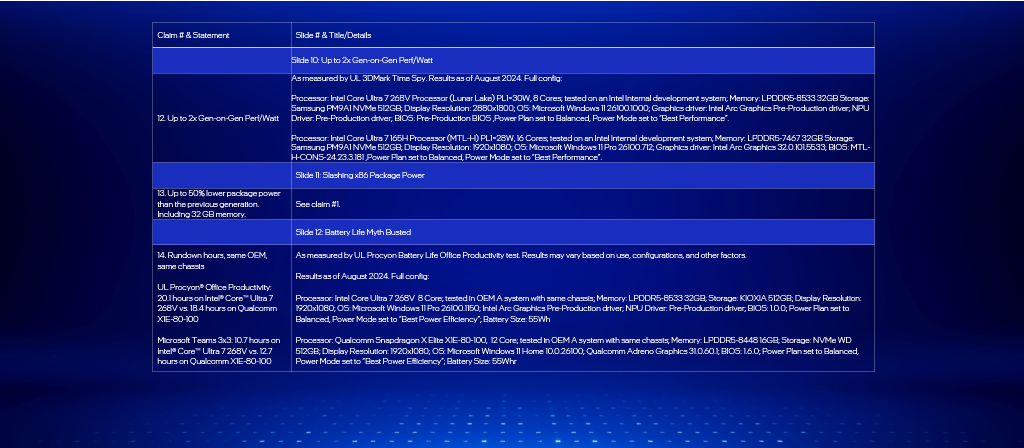
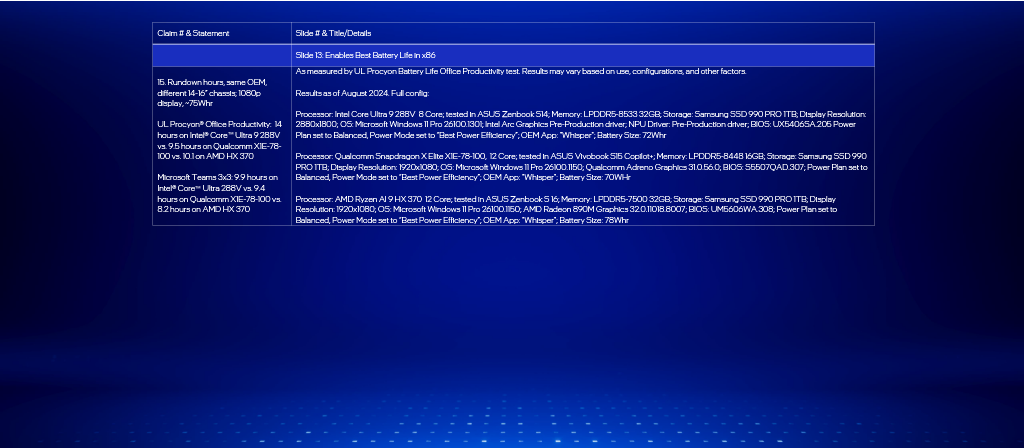
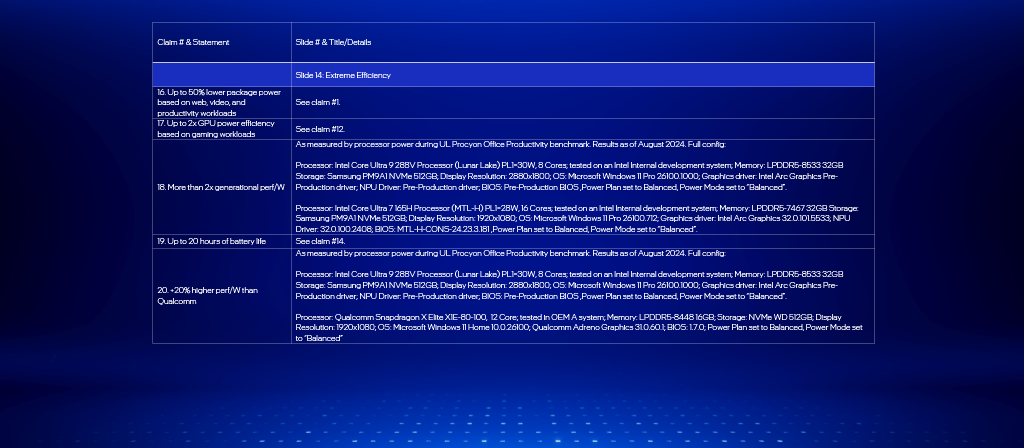
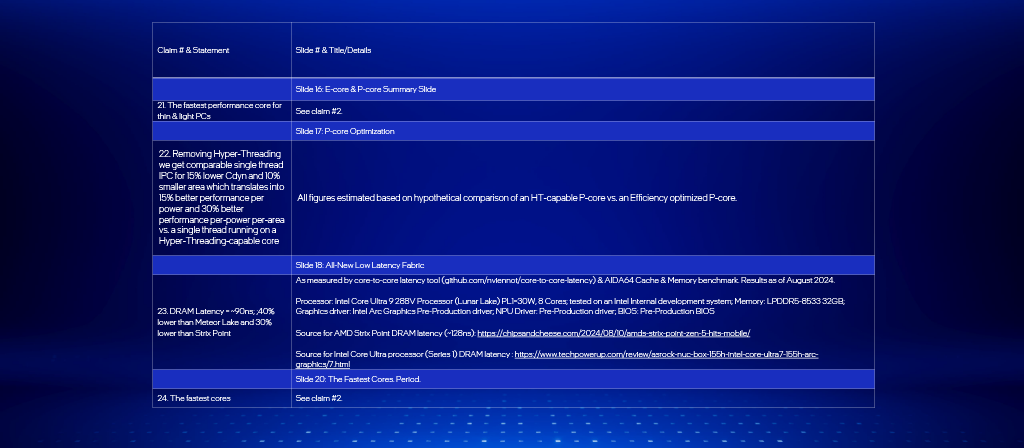
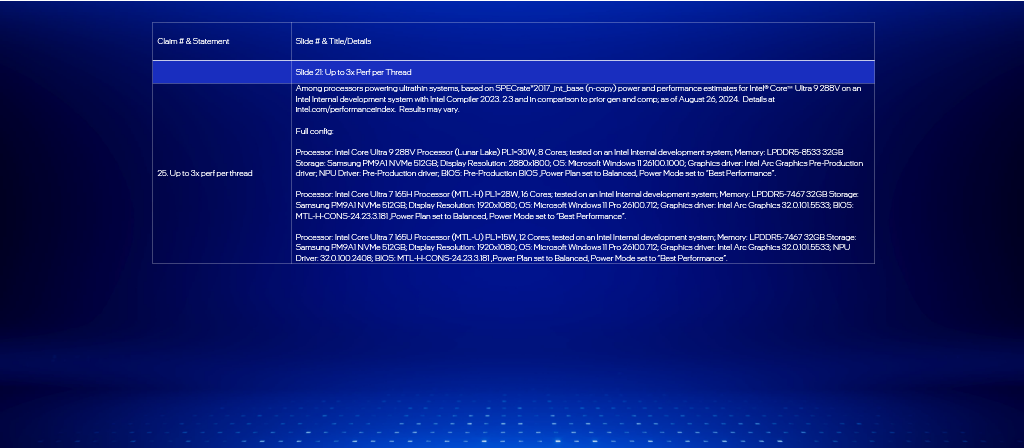
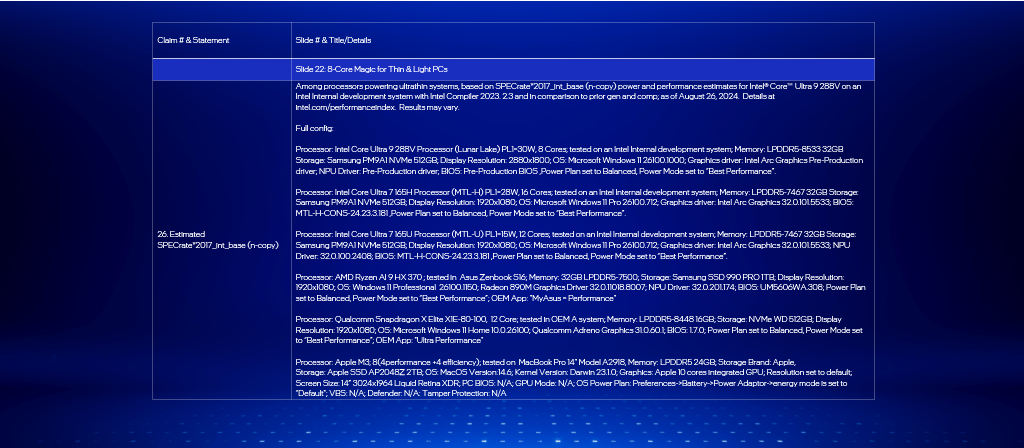
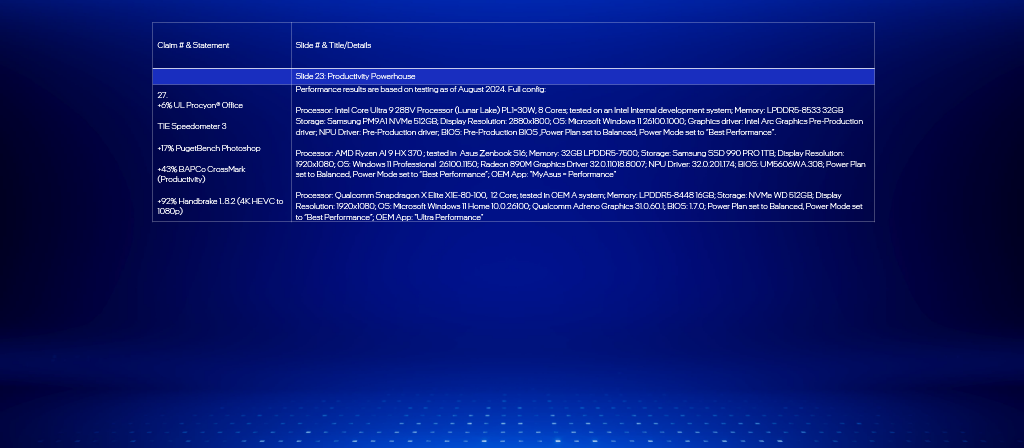
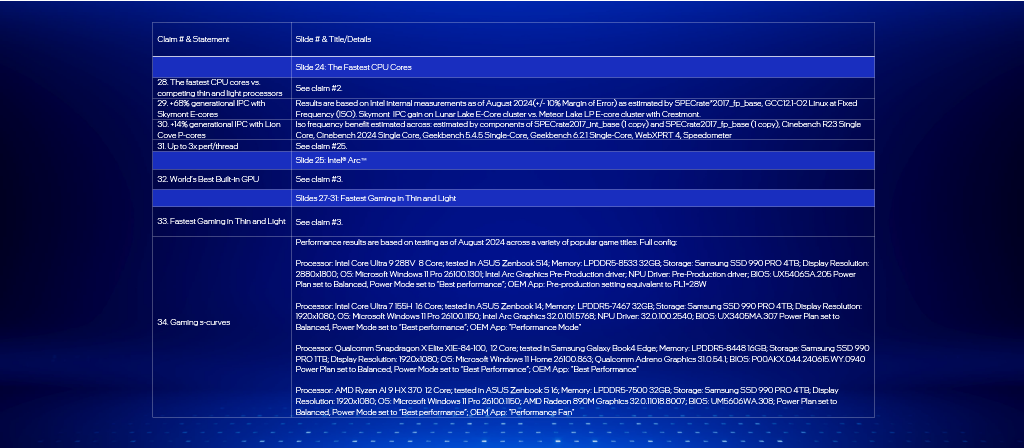
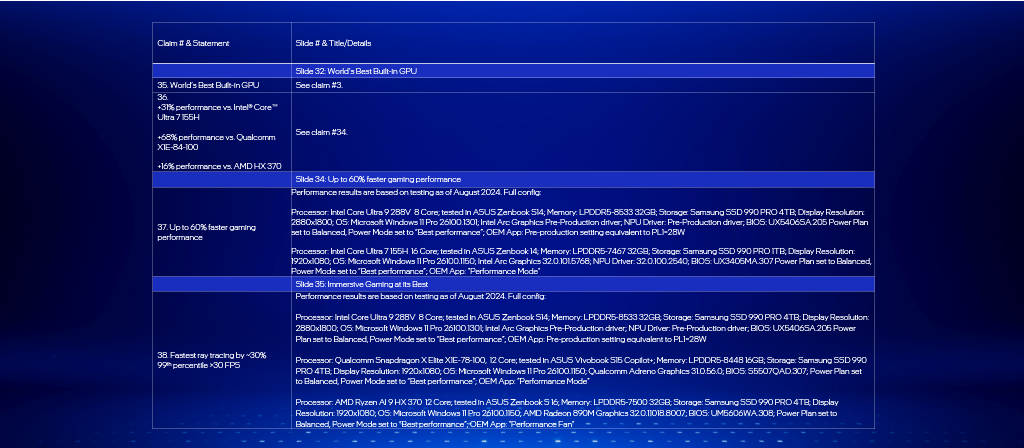
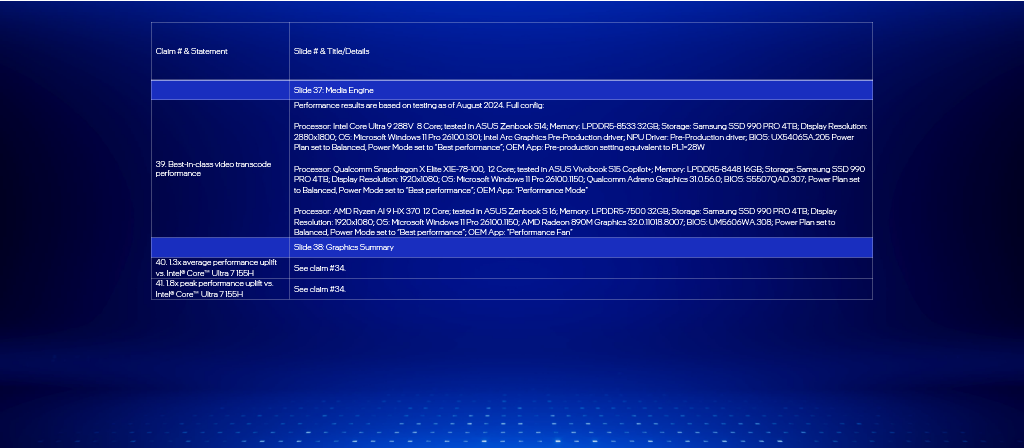
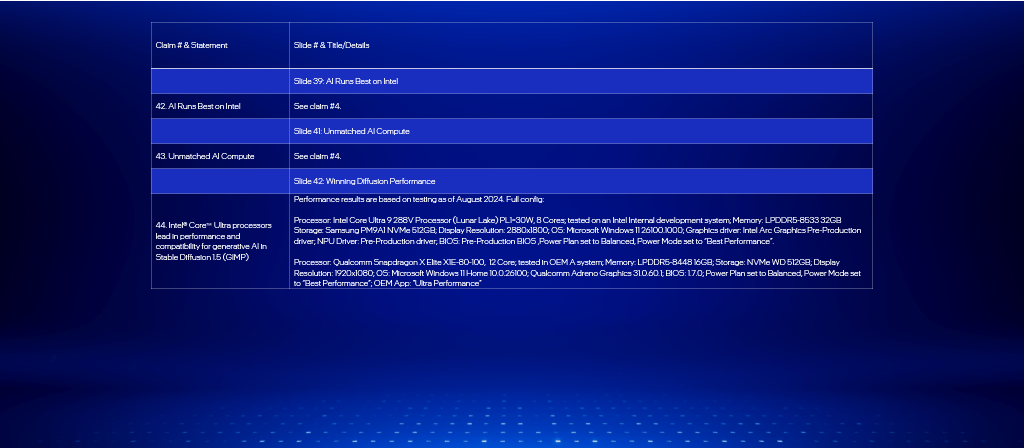
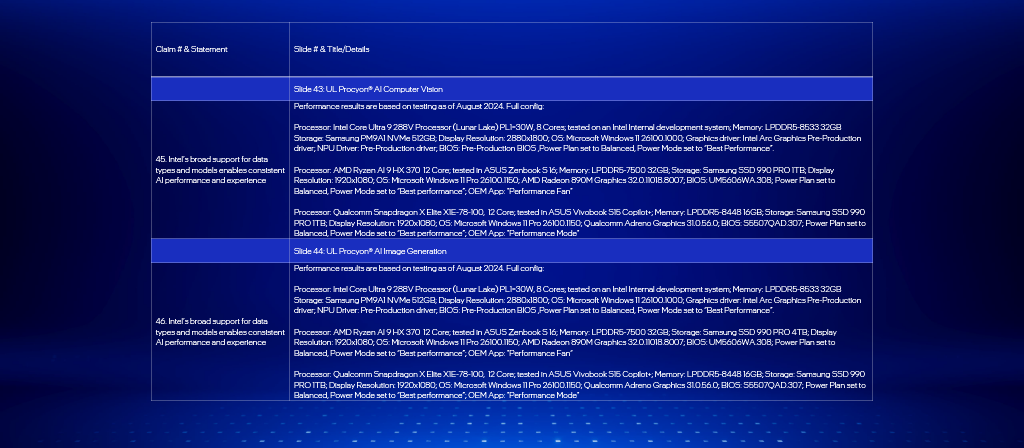
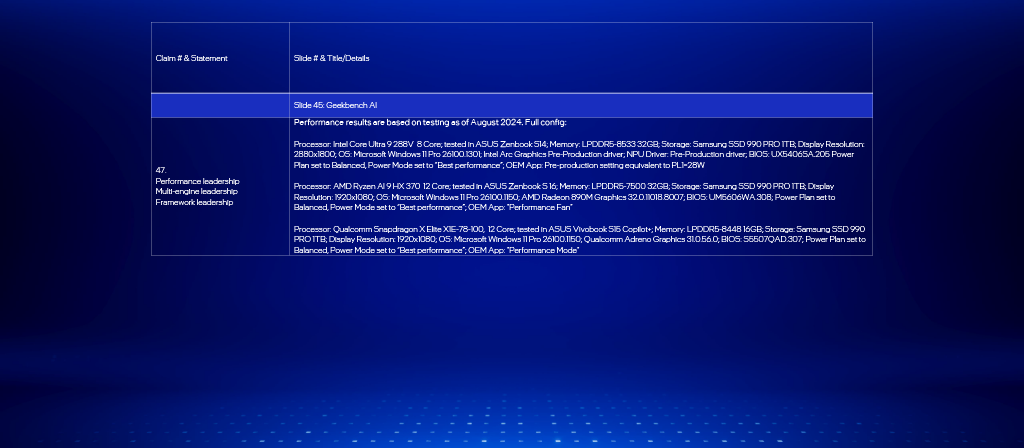
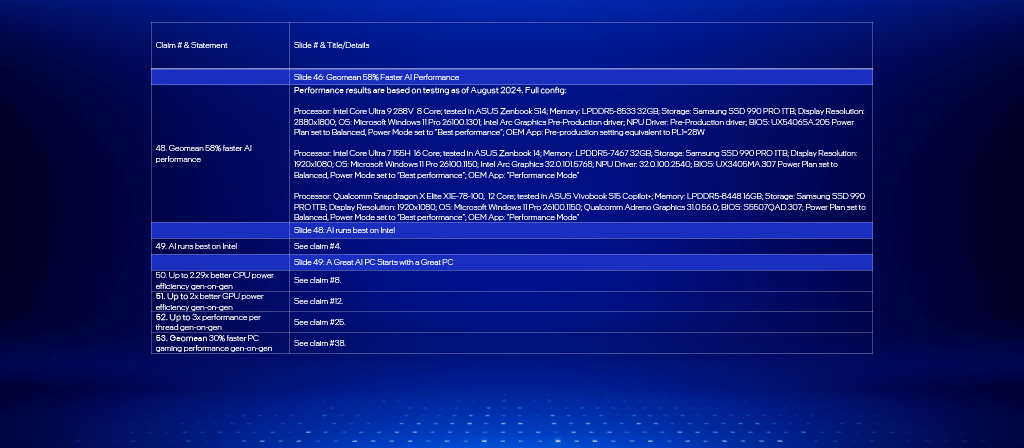
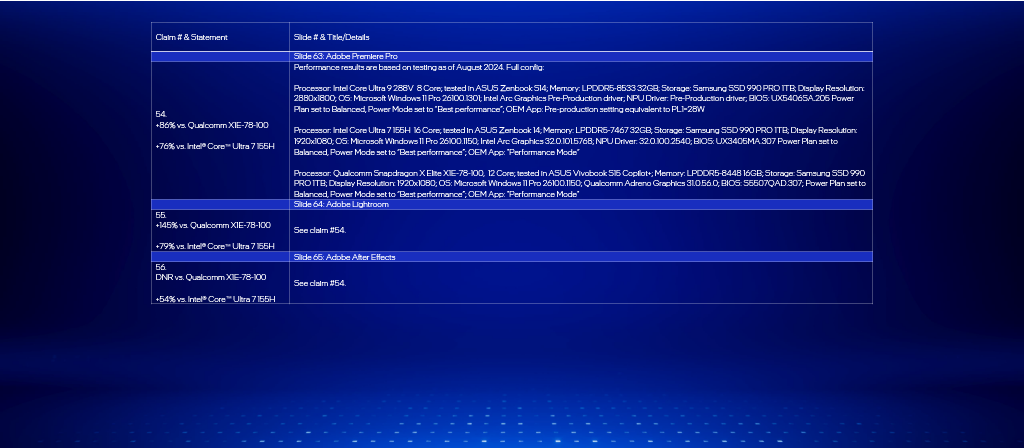
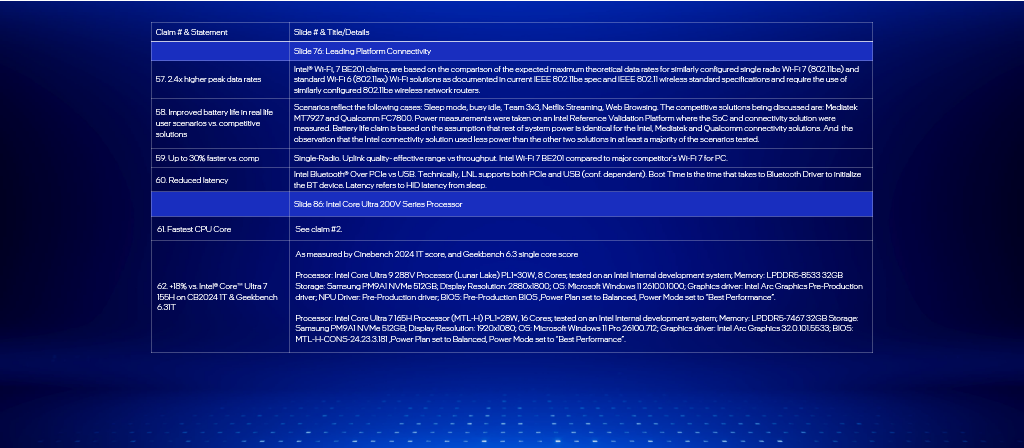
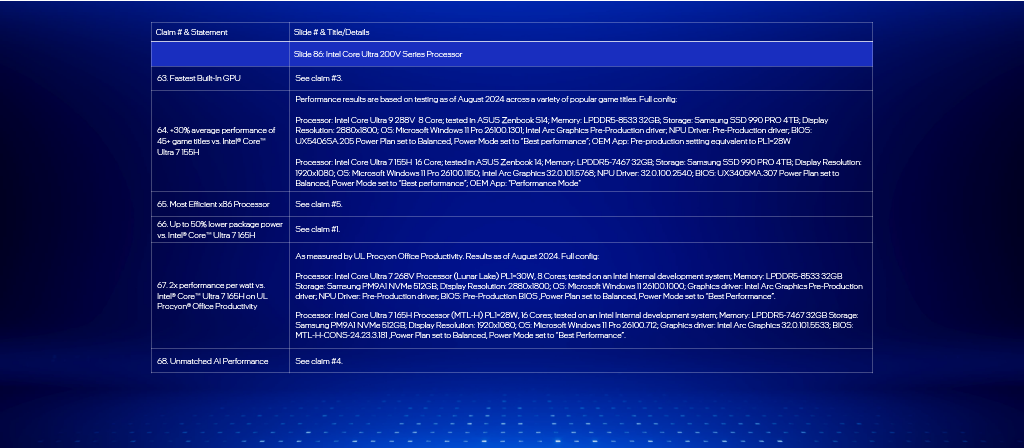
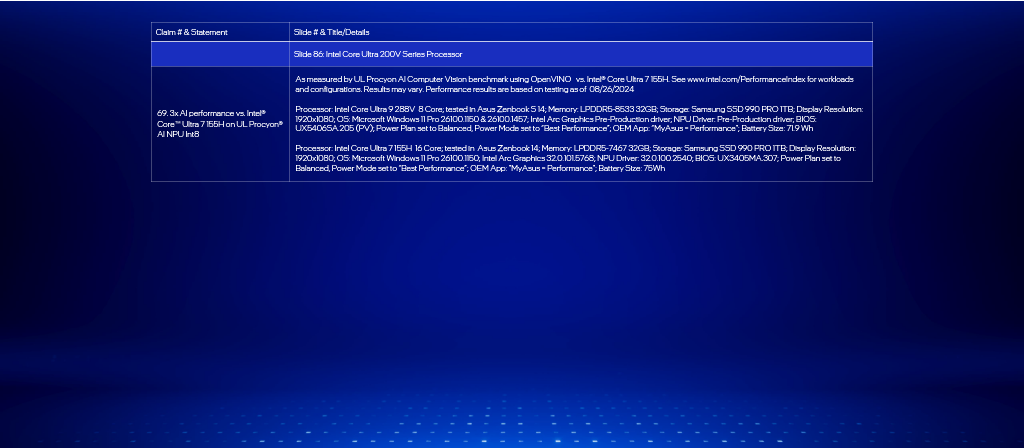
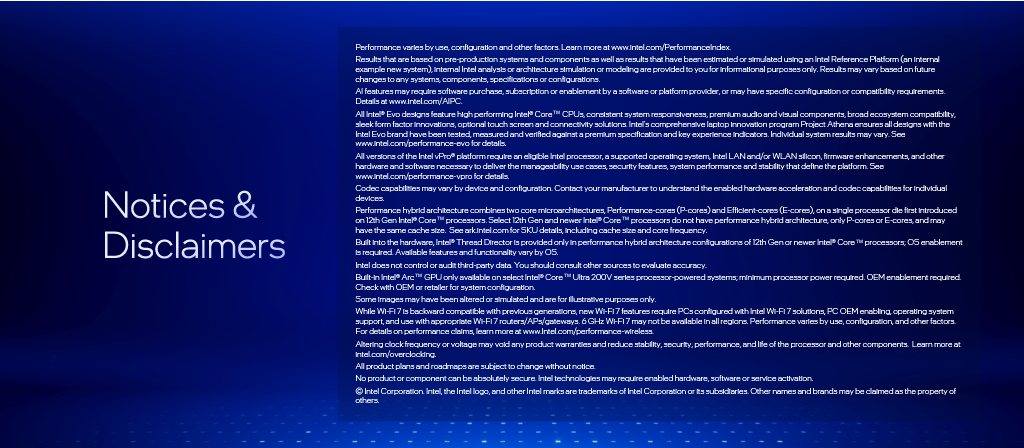
Lunar Lake preorders start today, and units start shipping on September 24. If tradition holds, you'll see reviews on that date.







